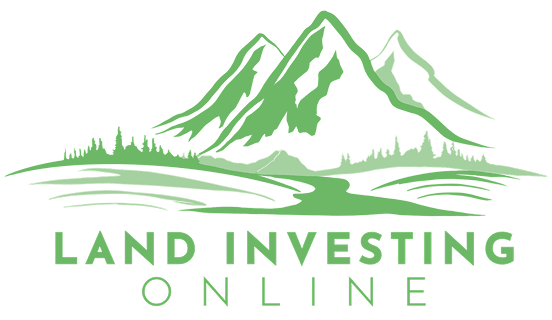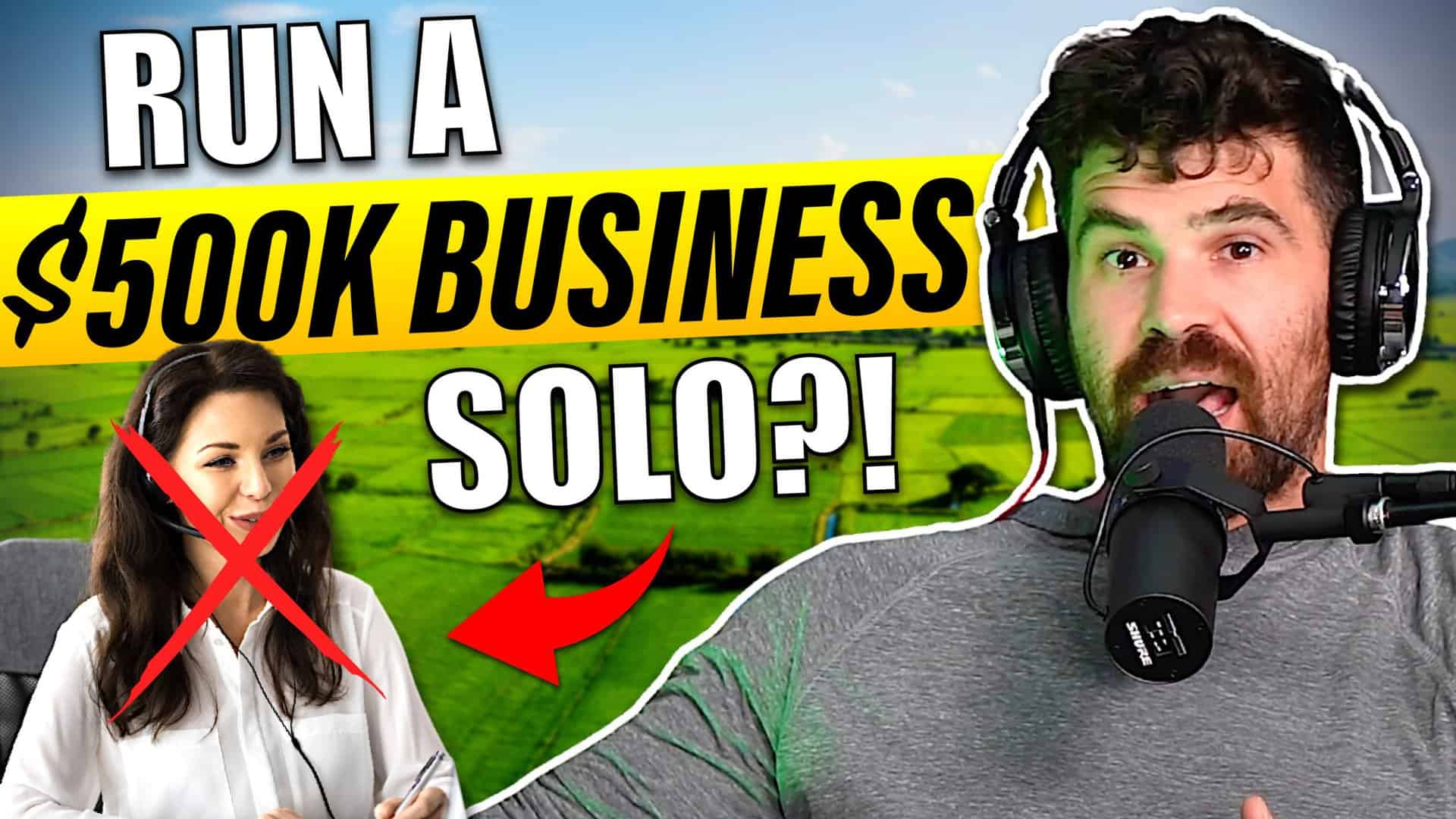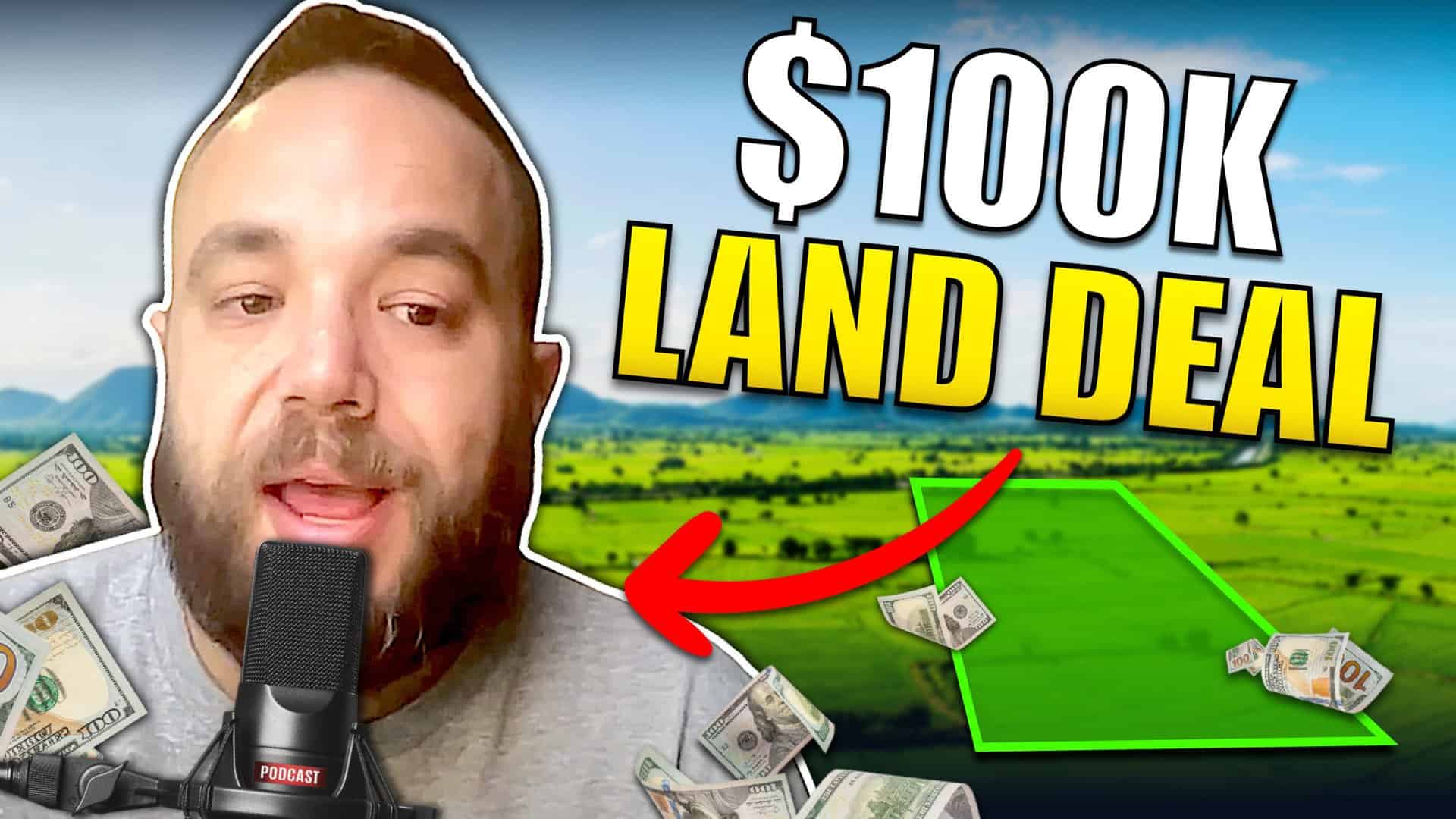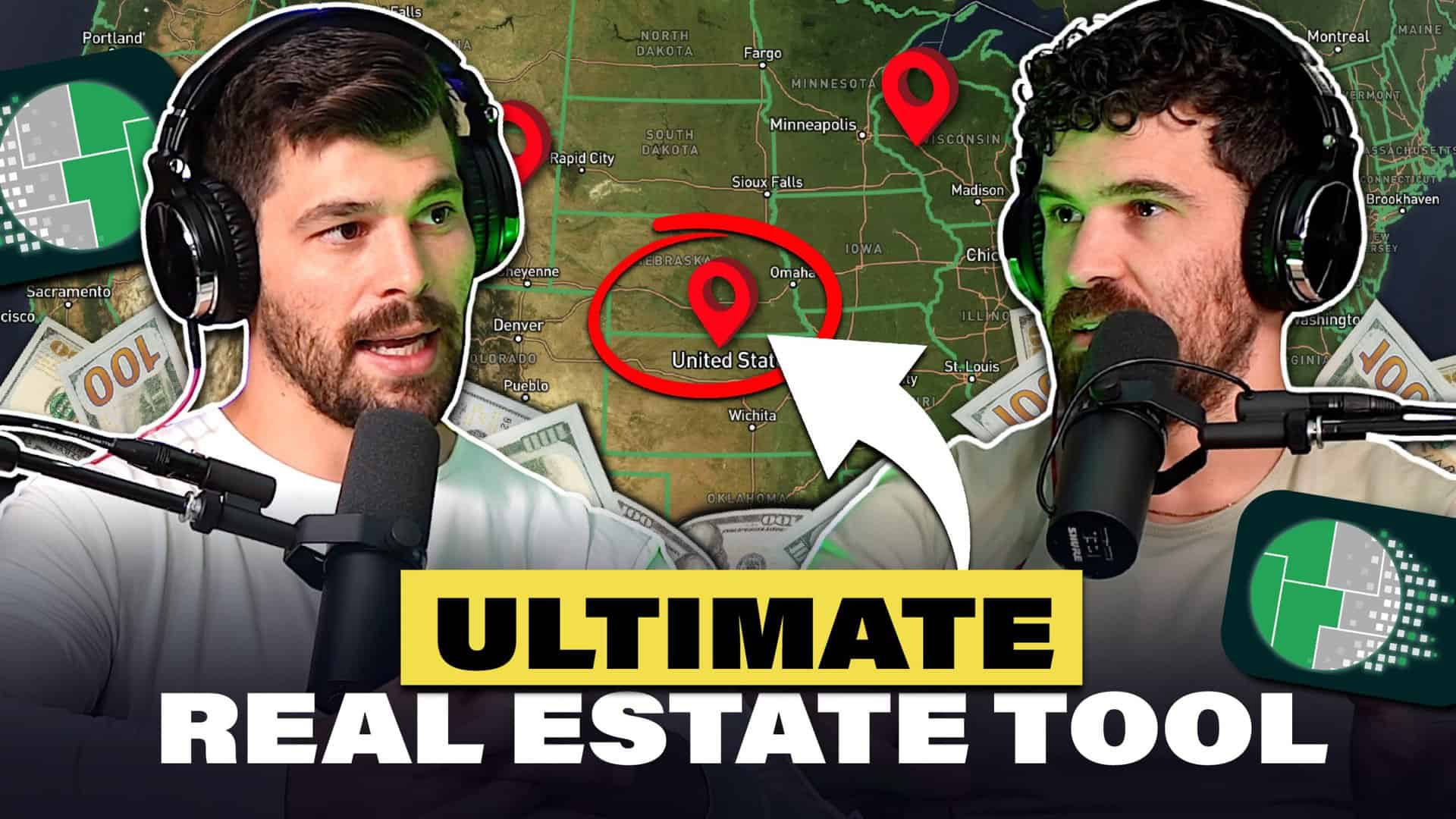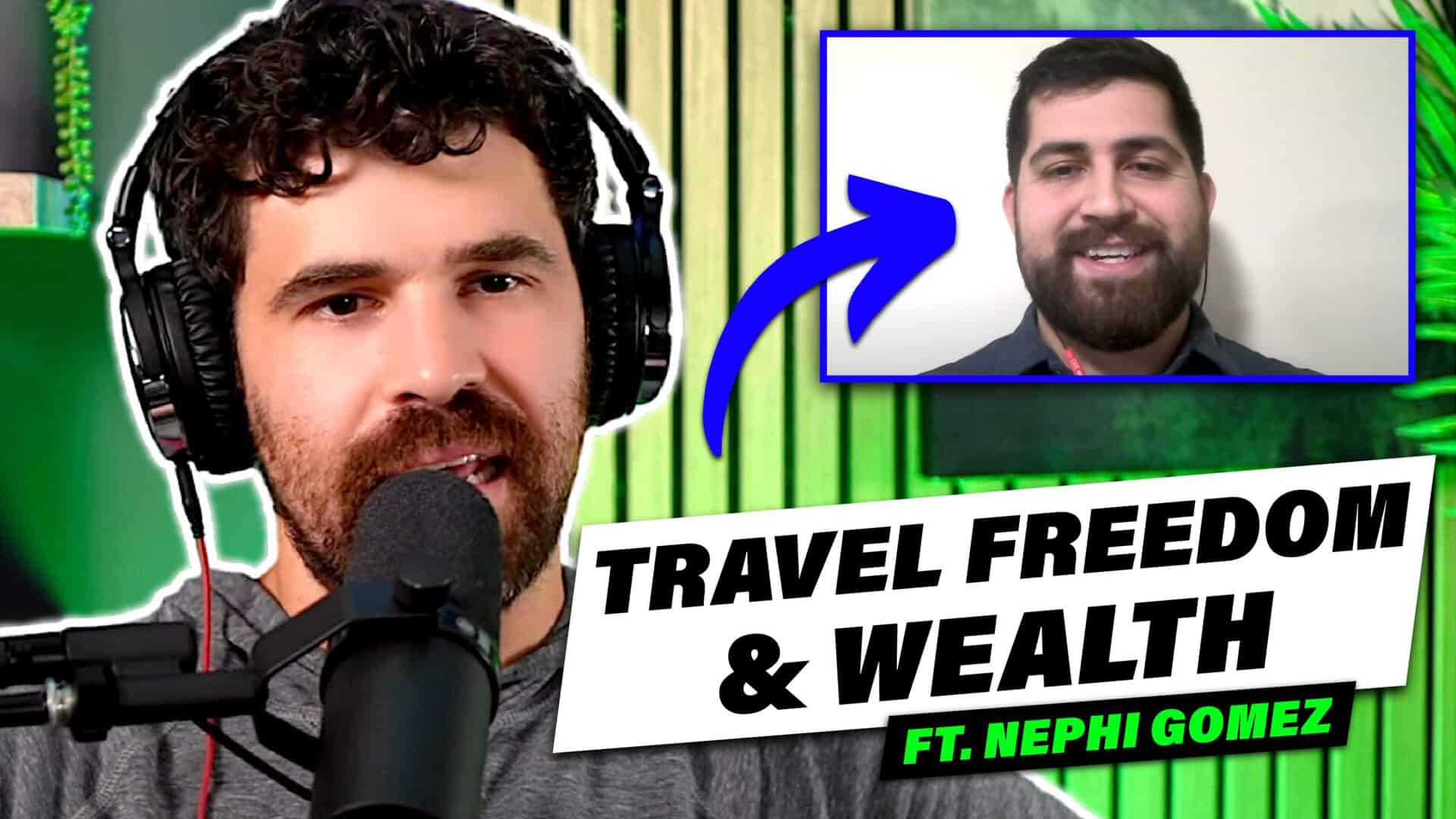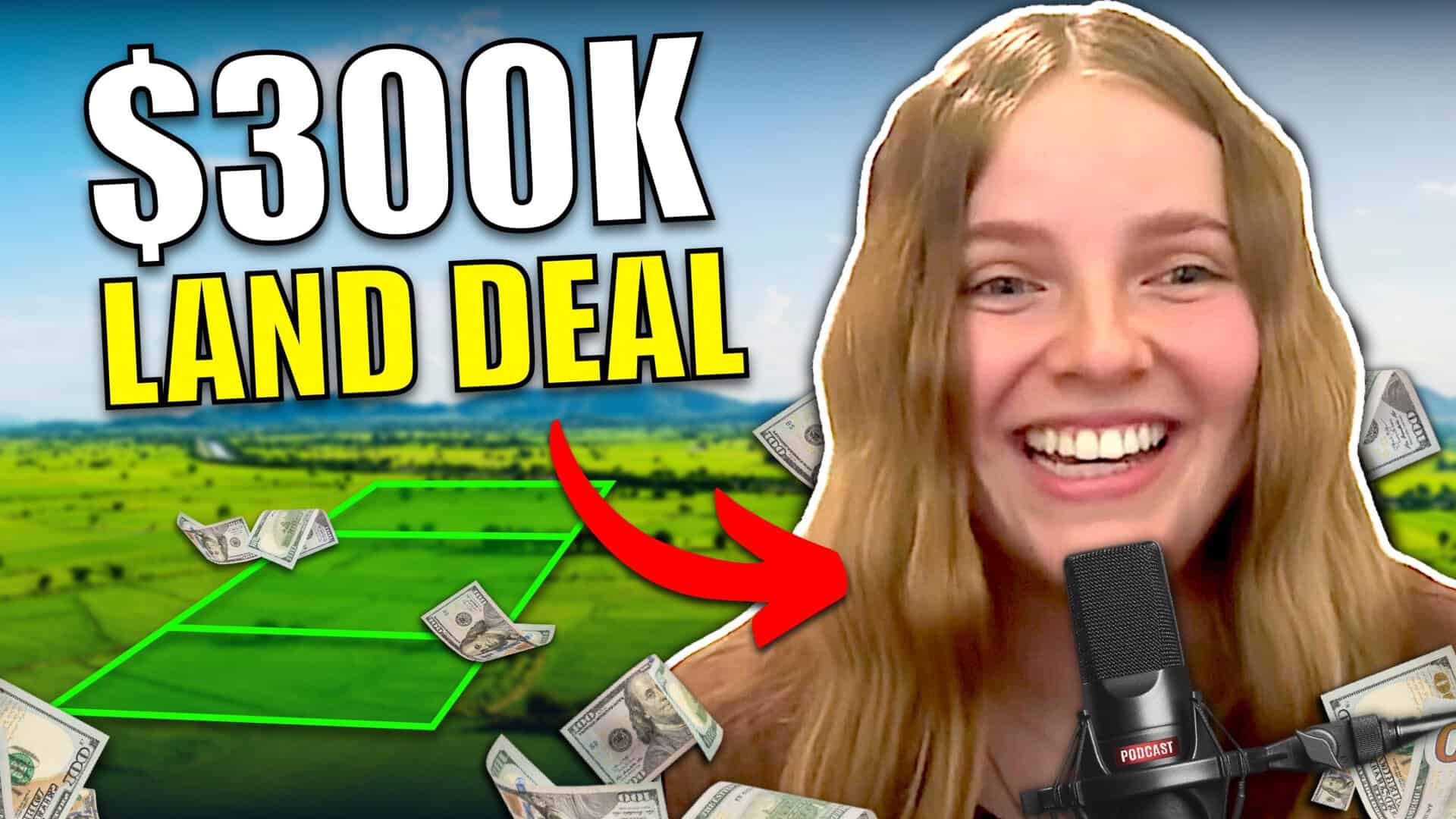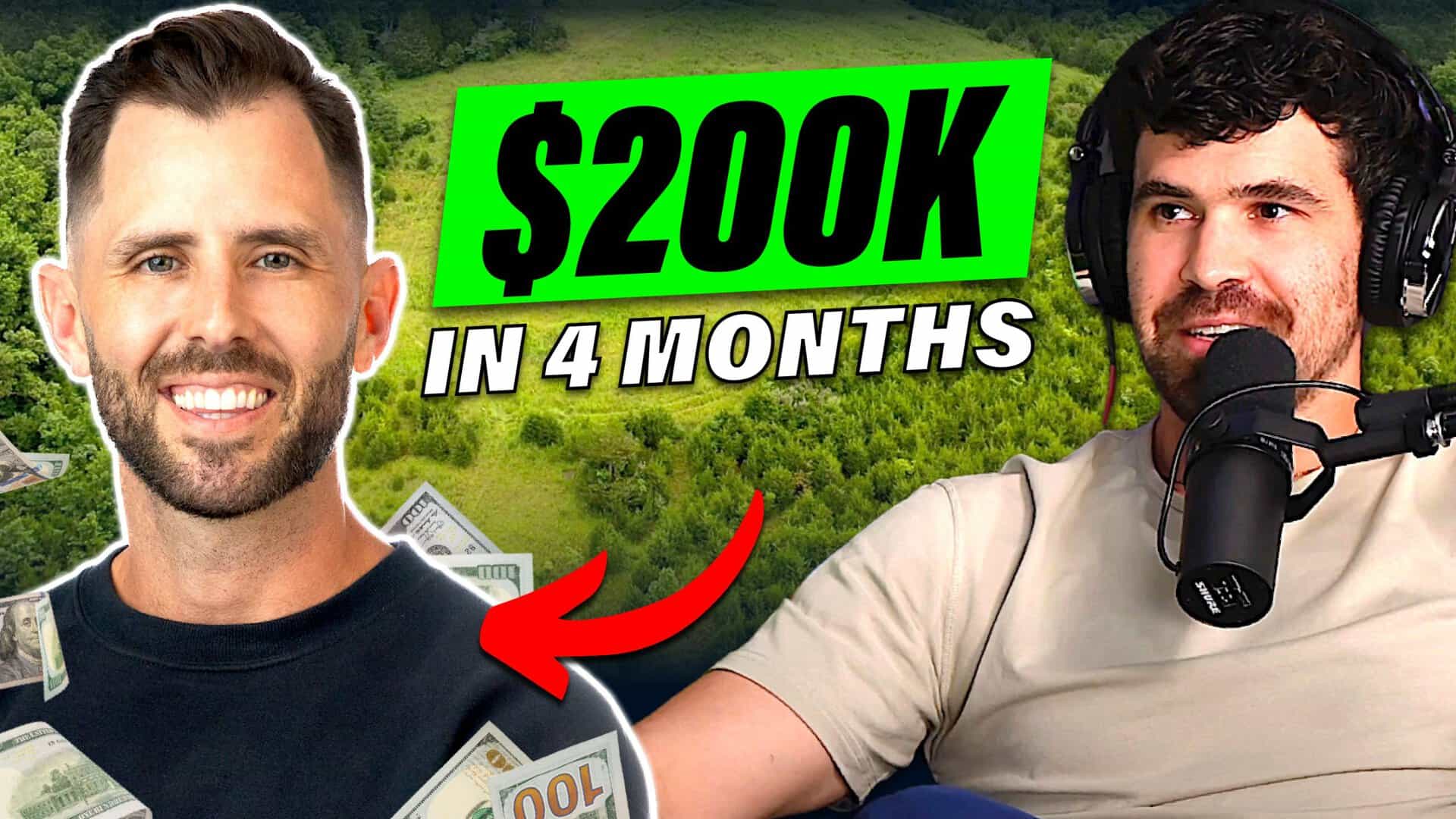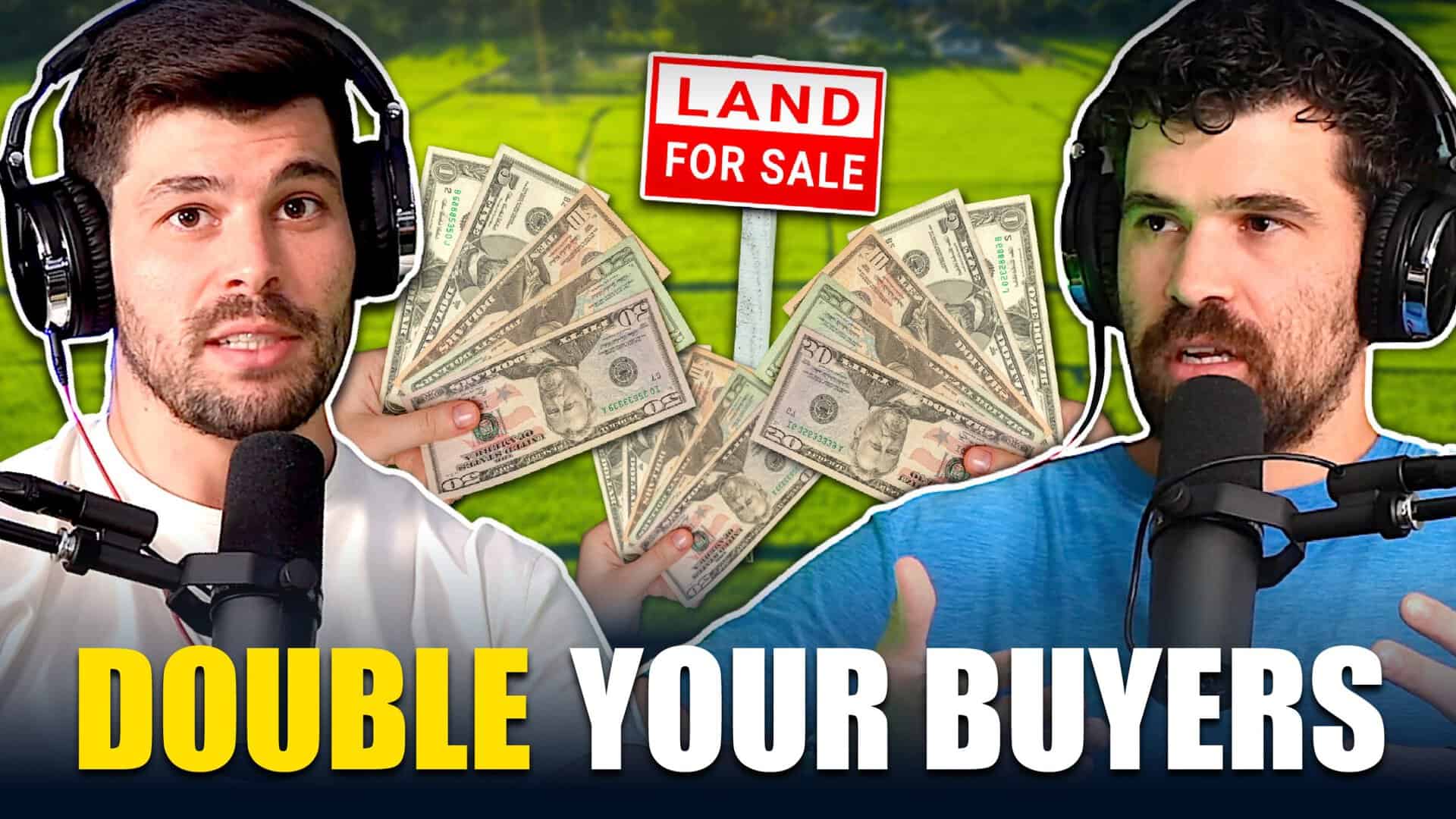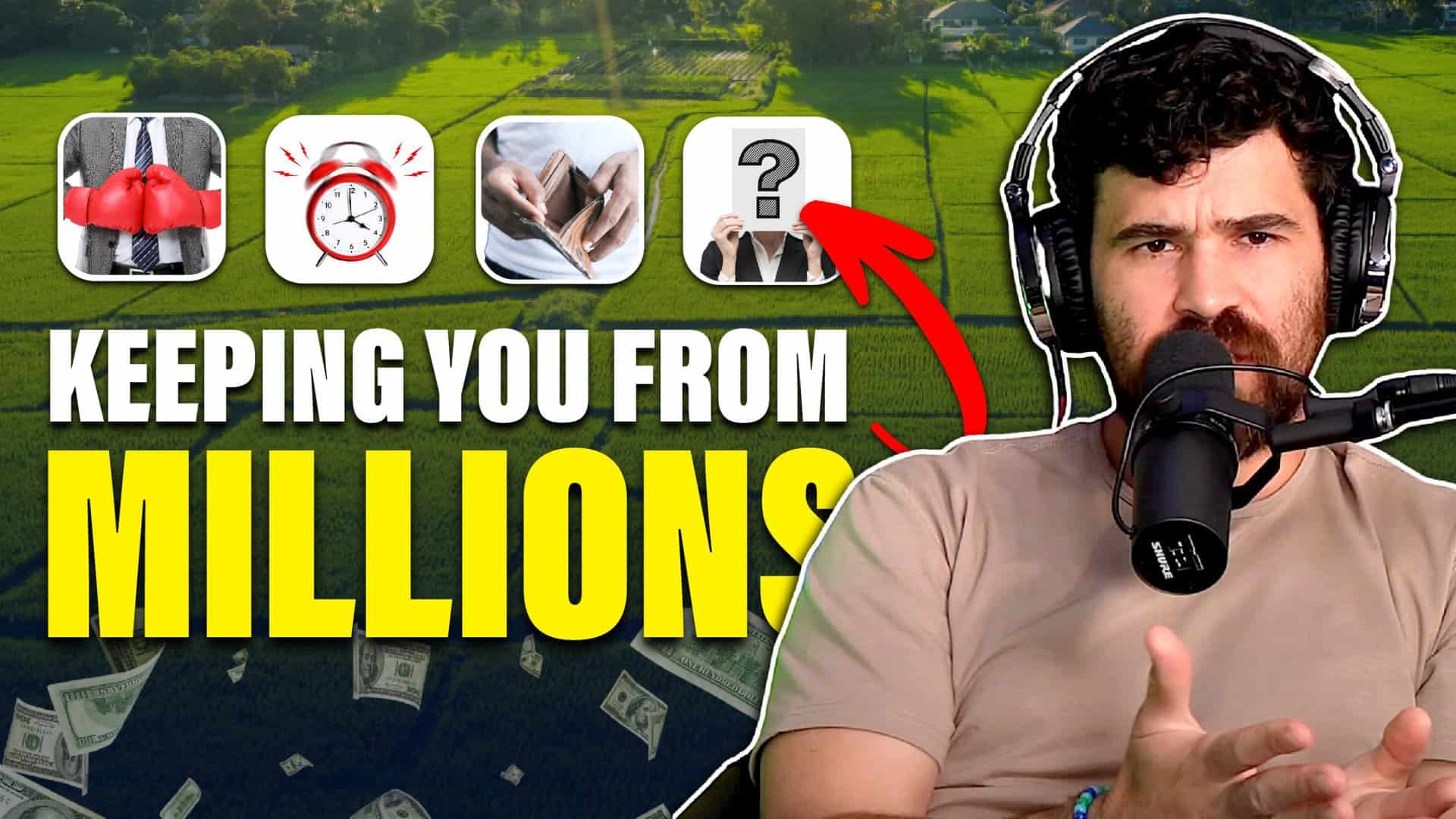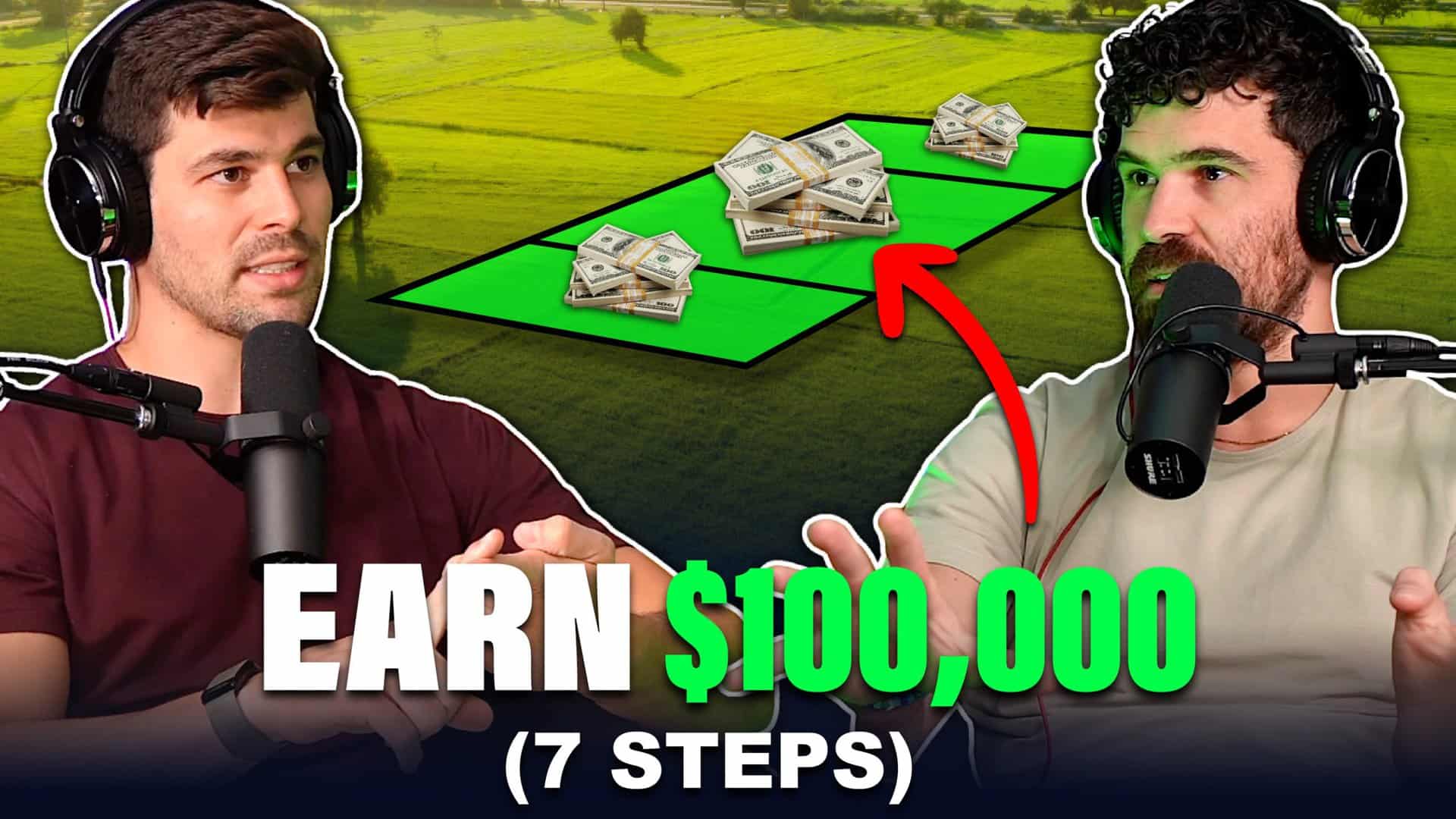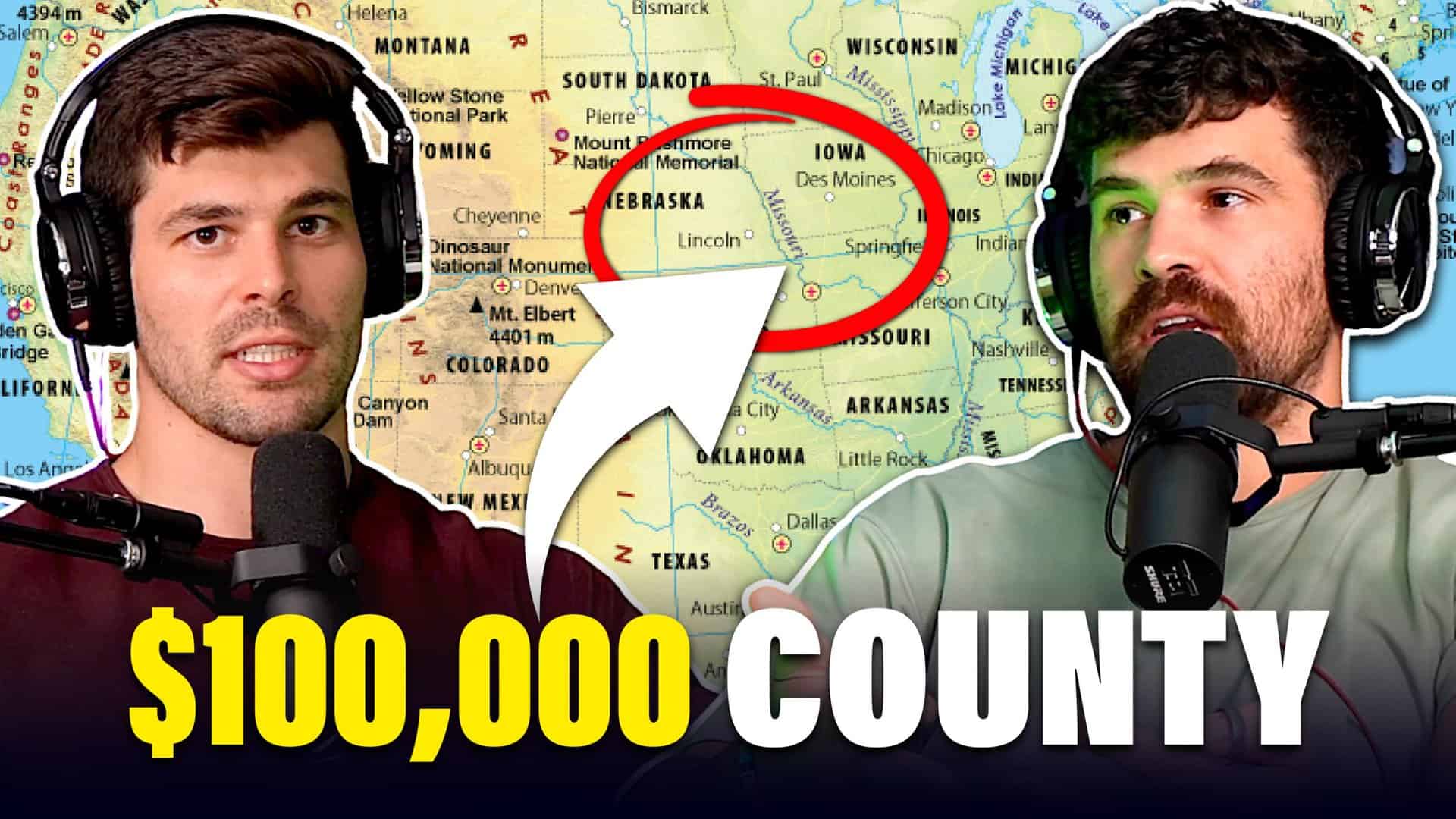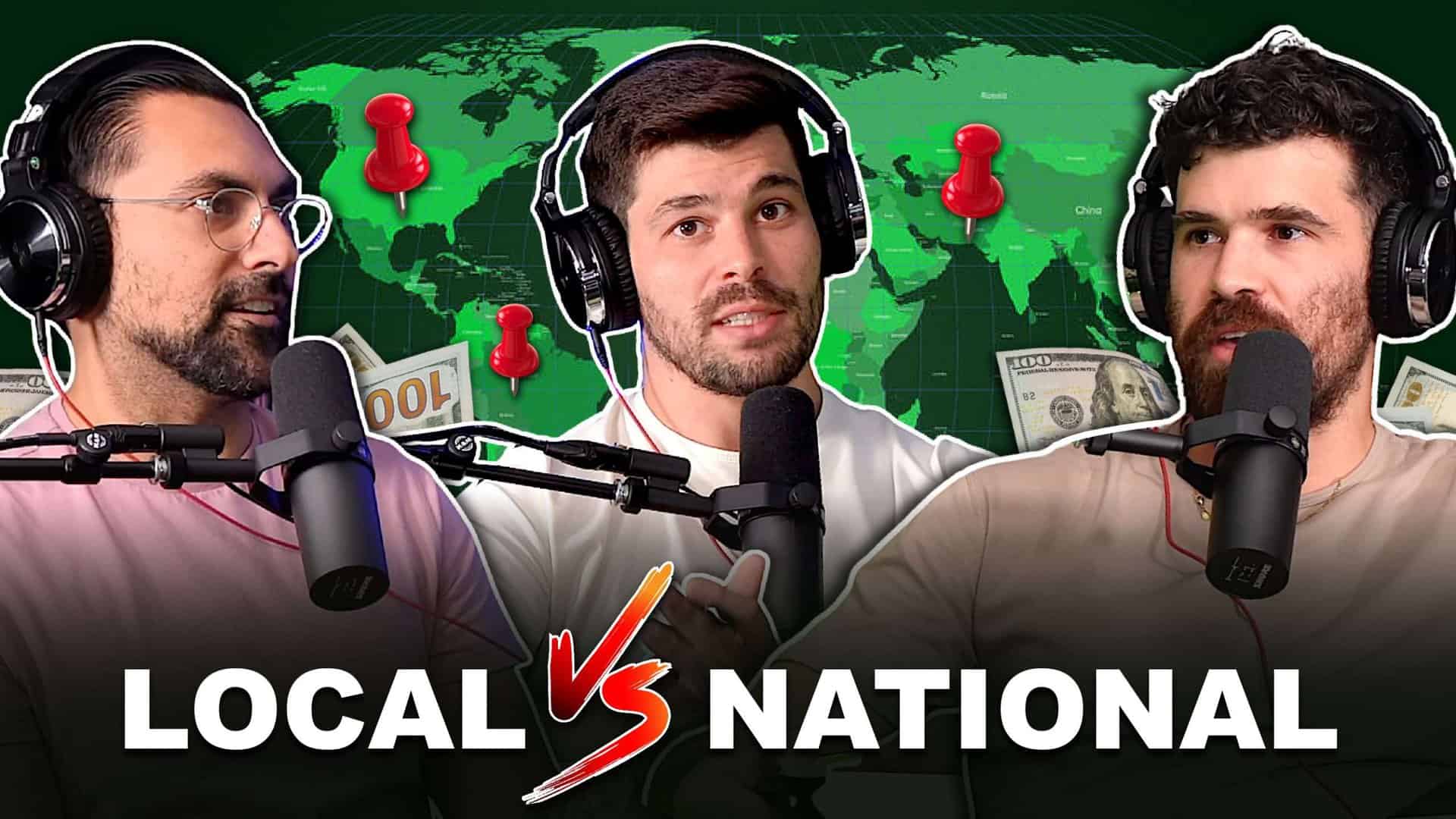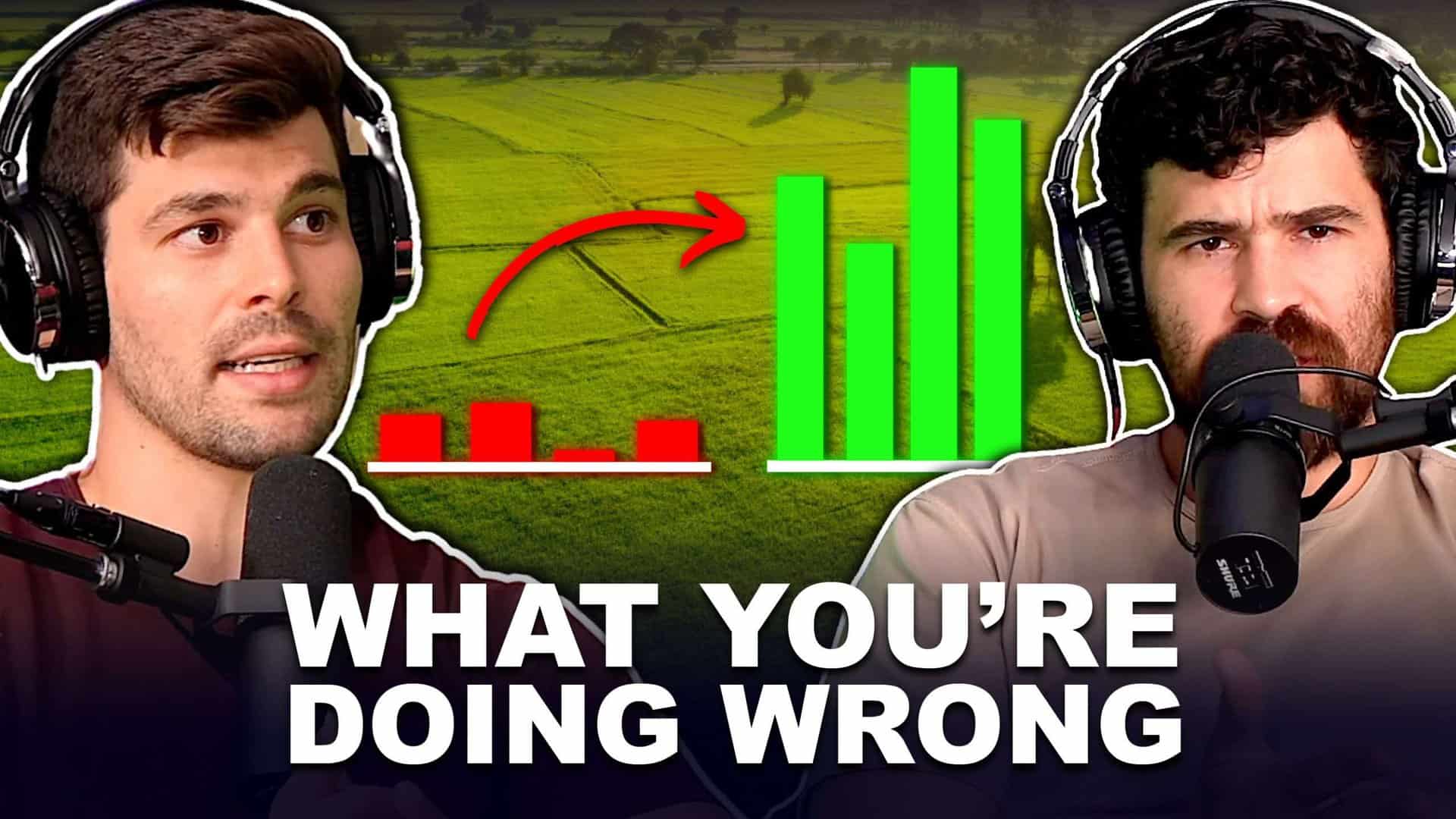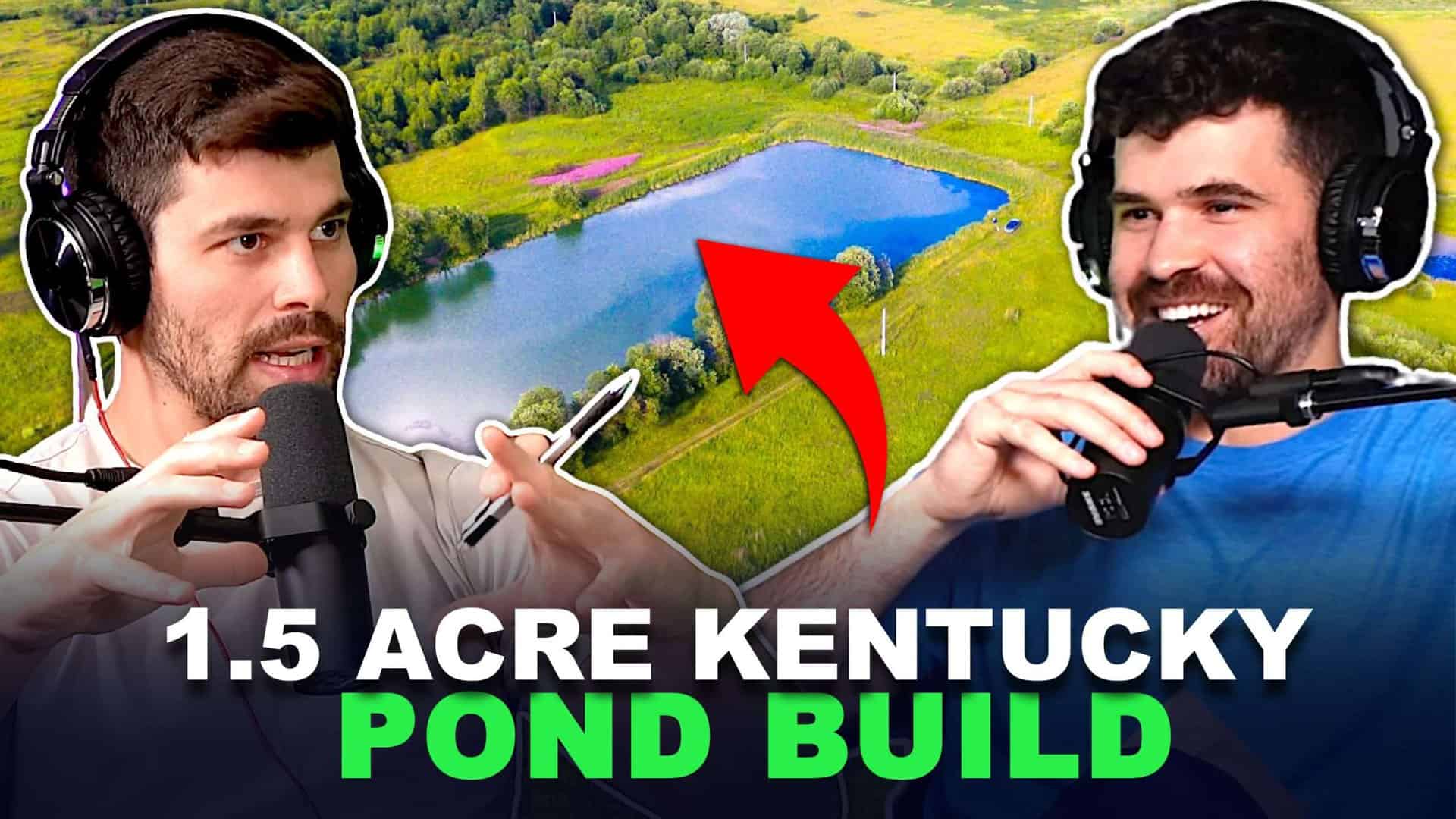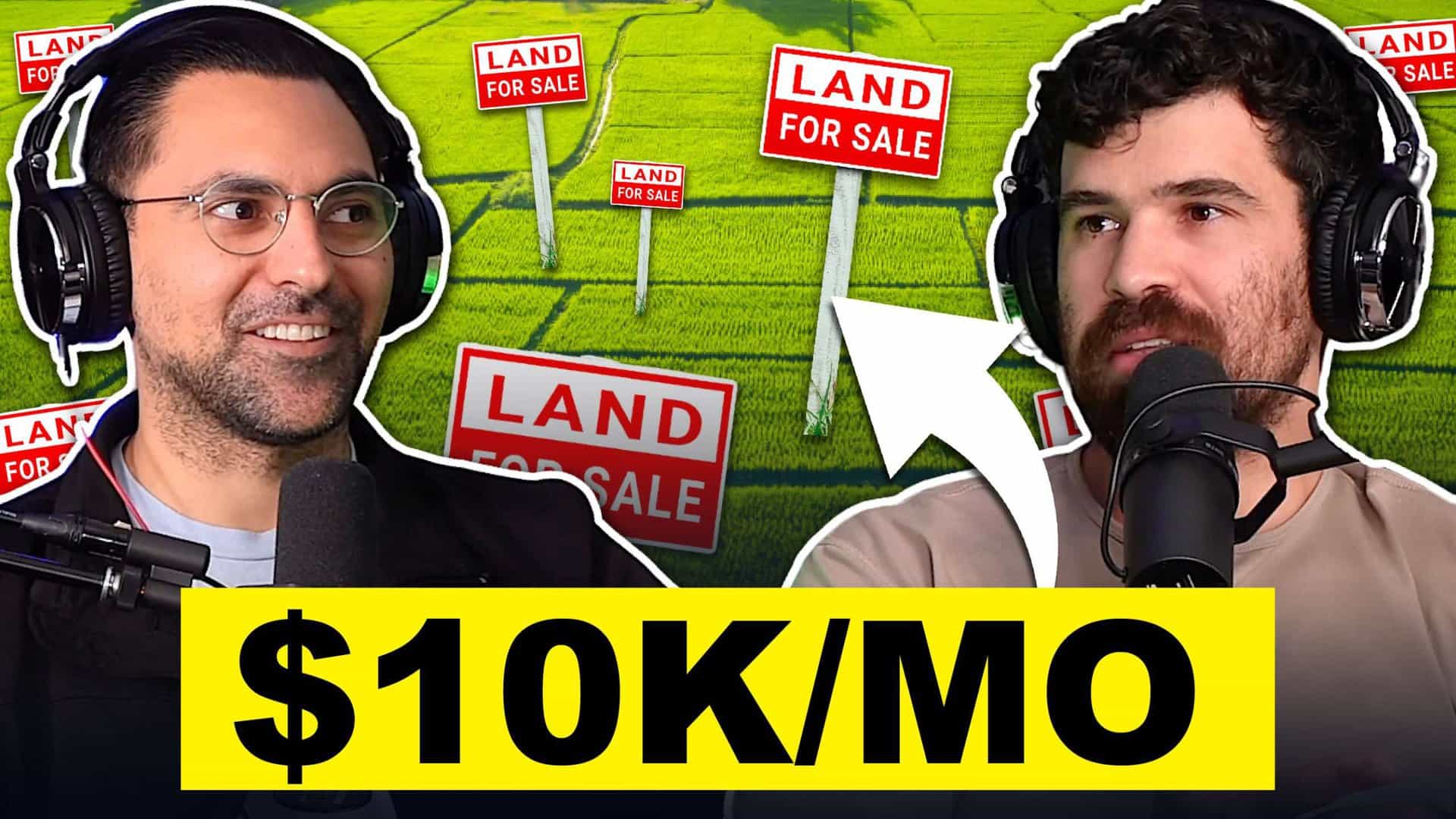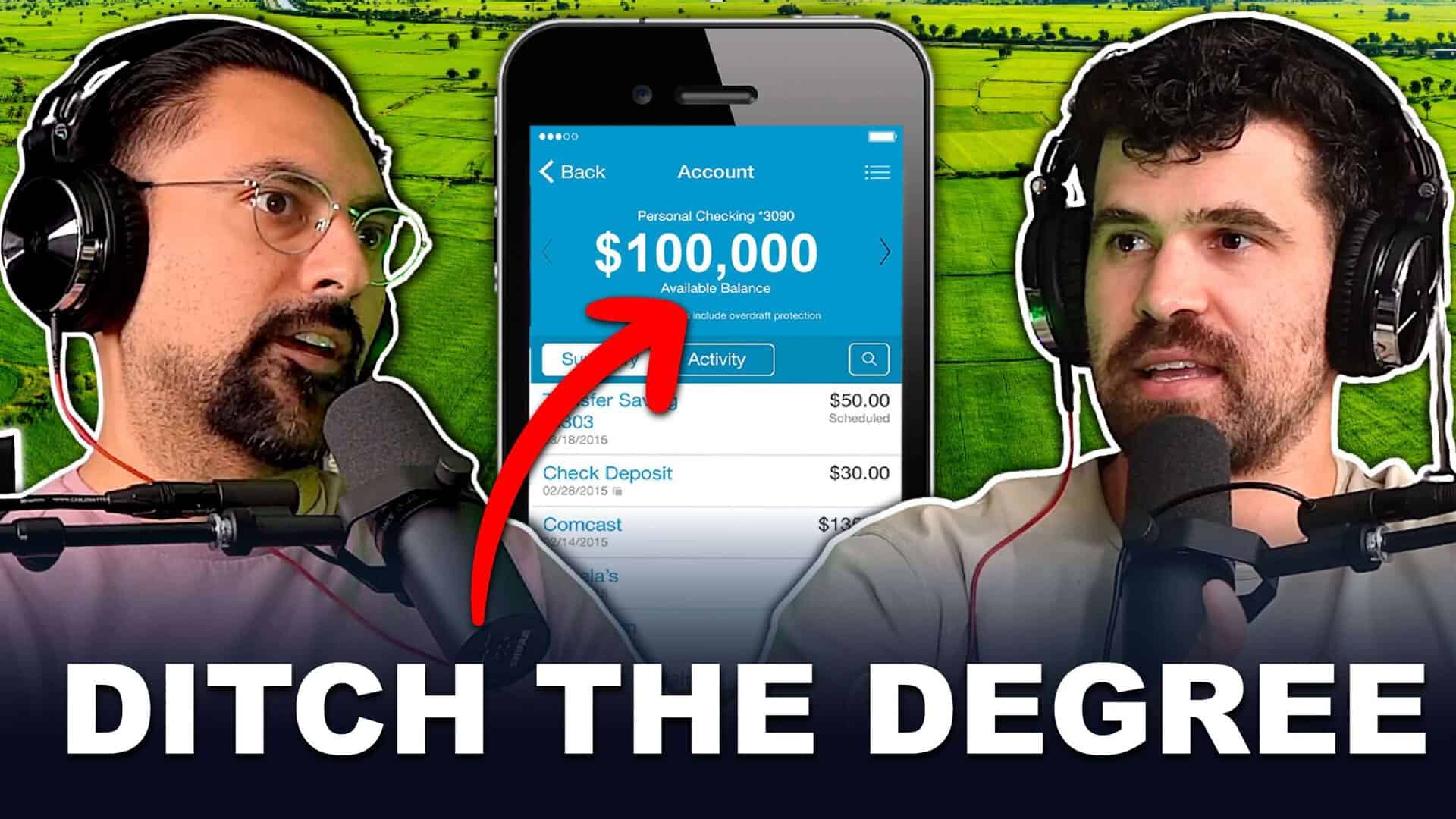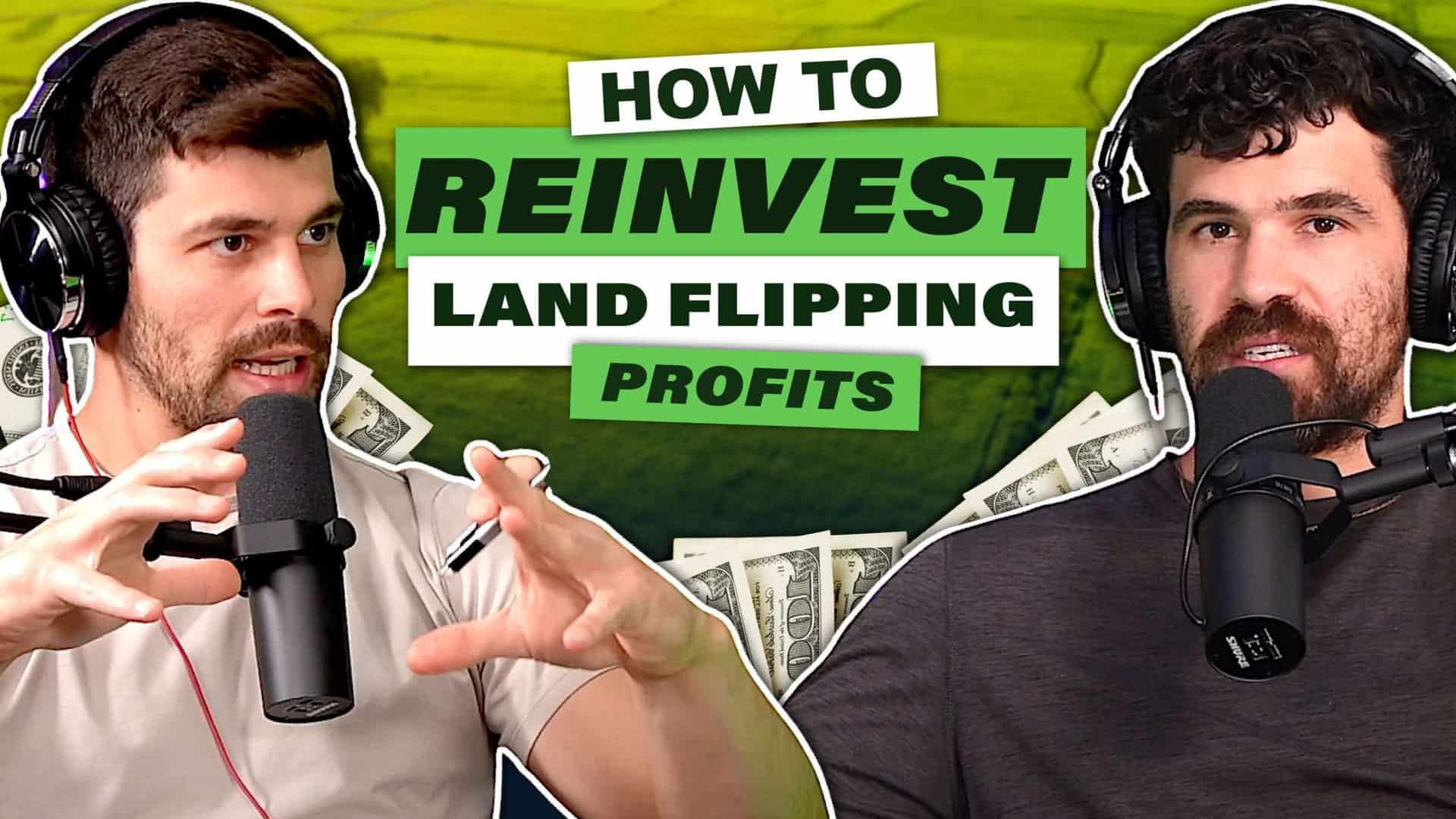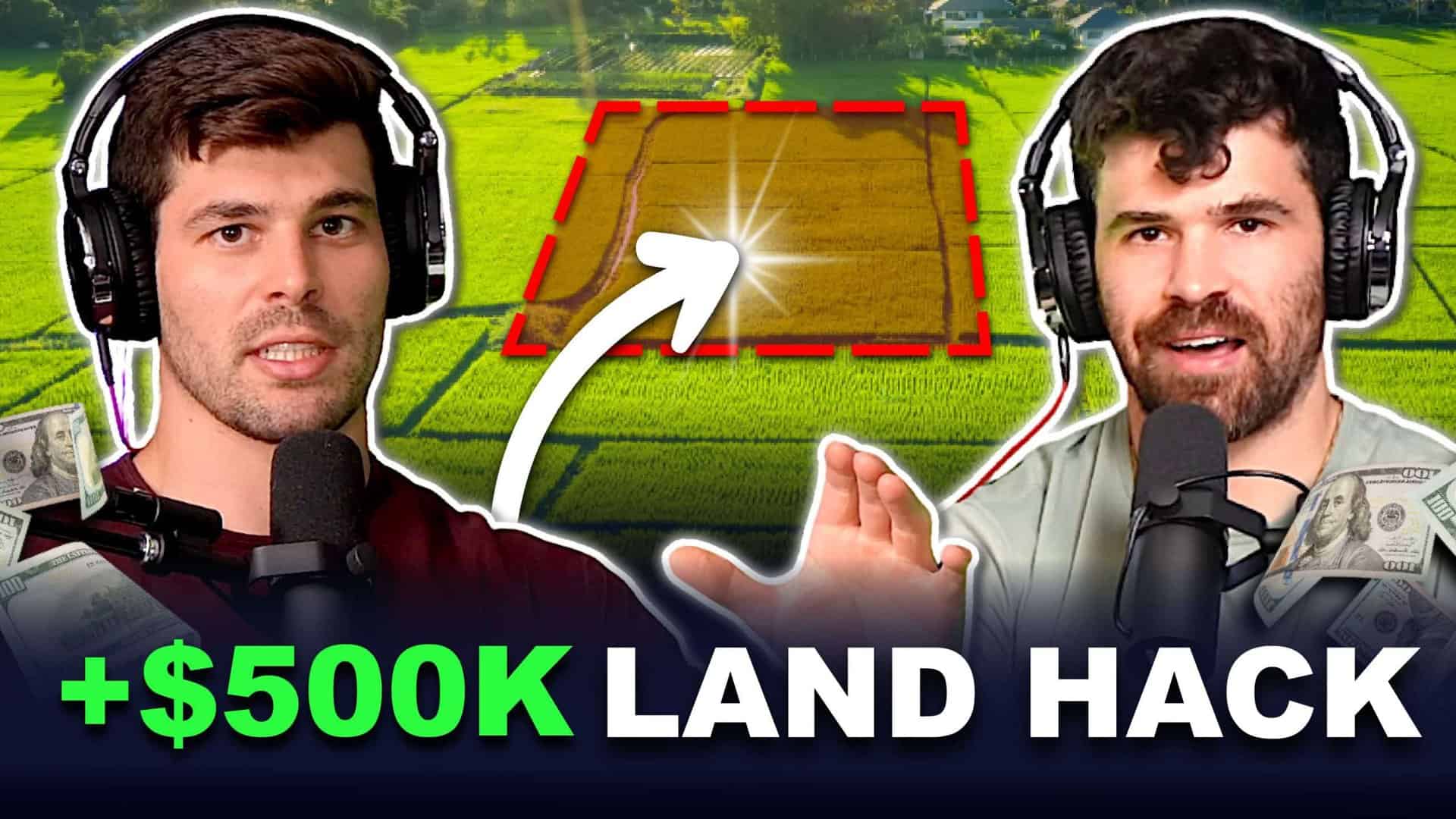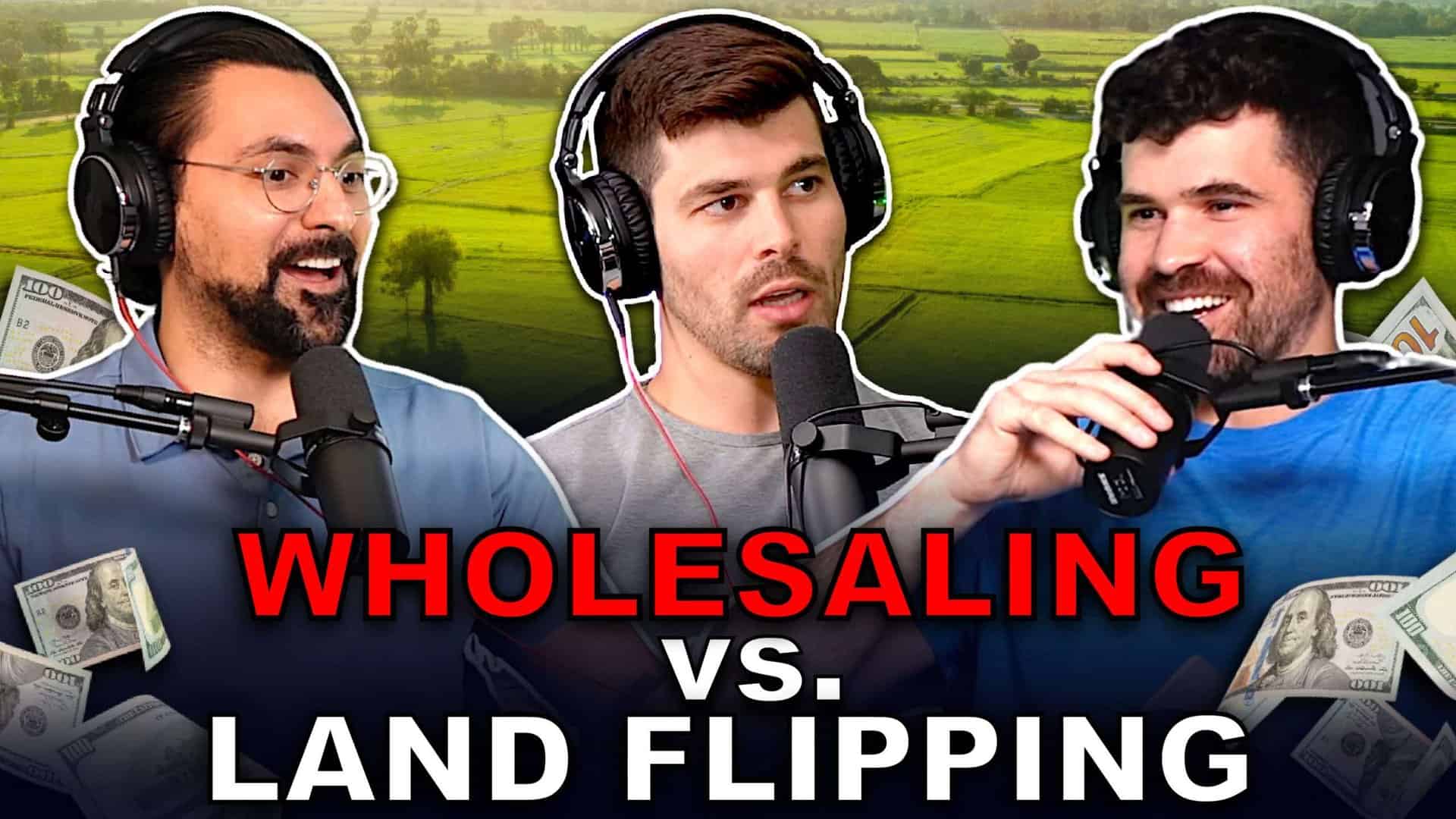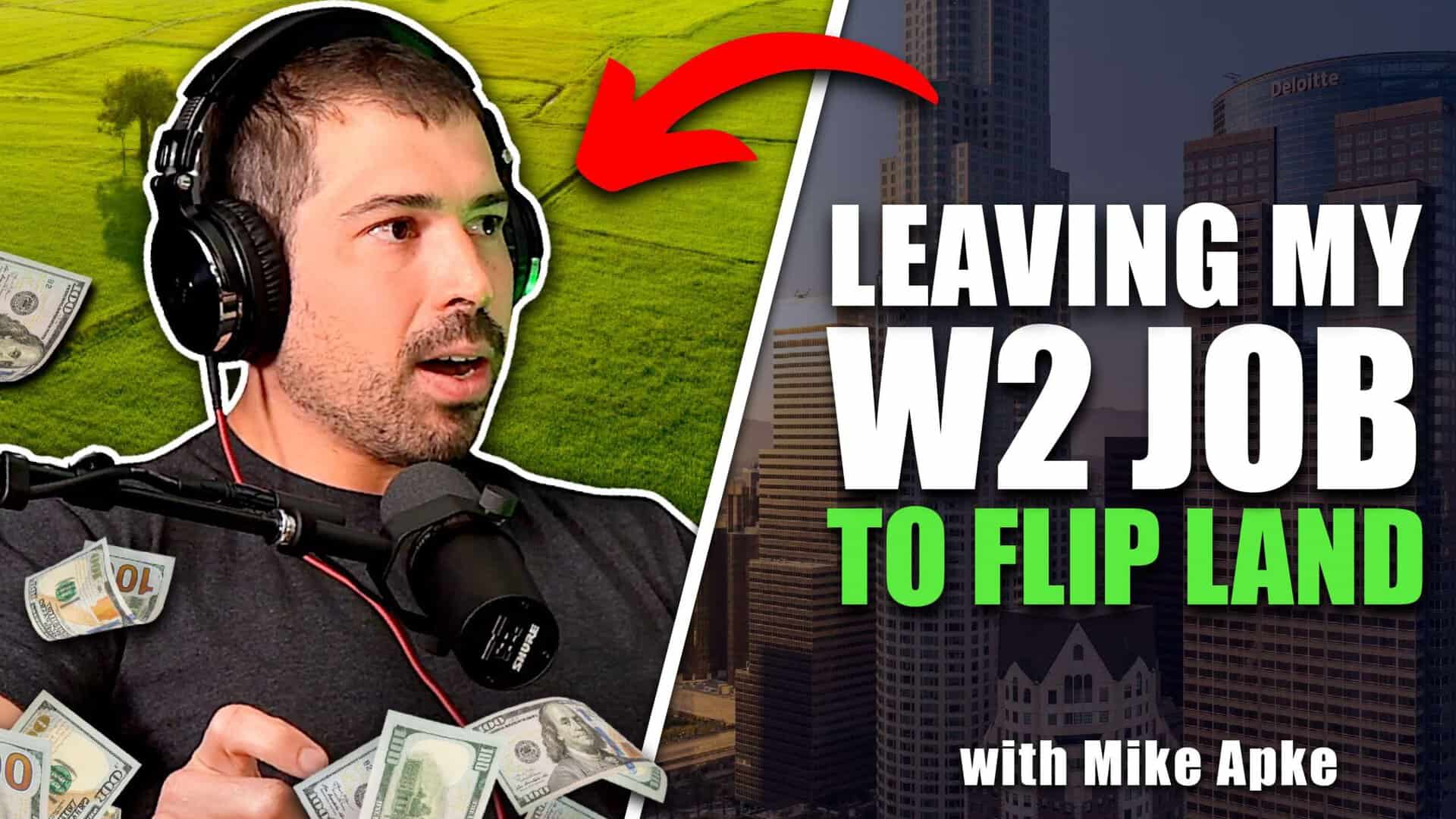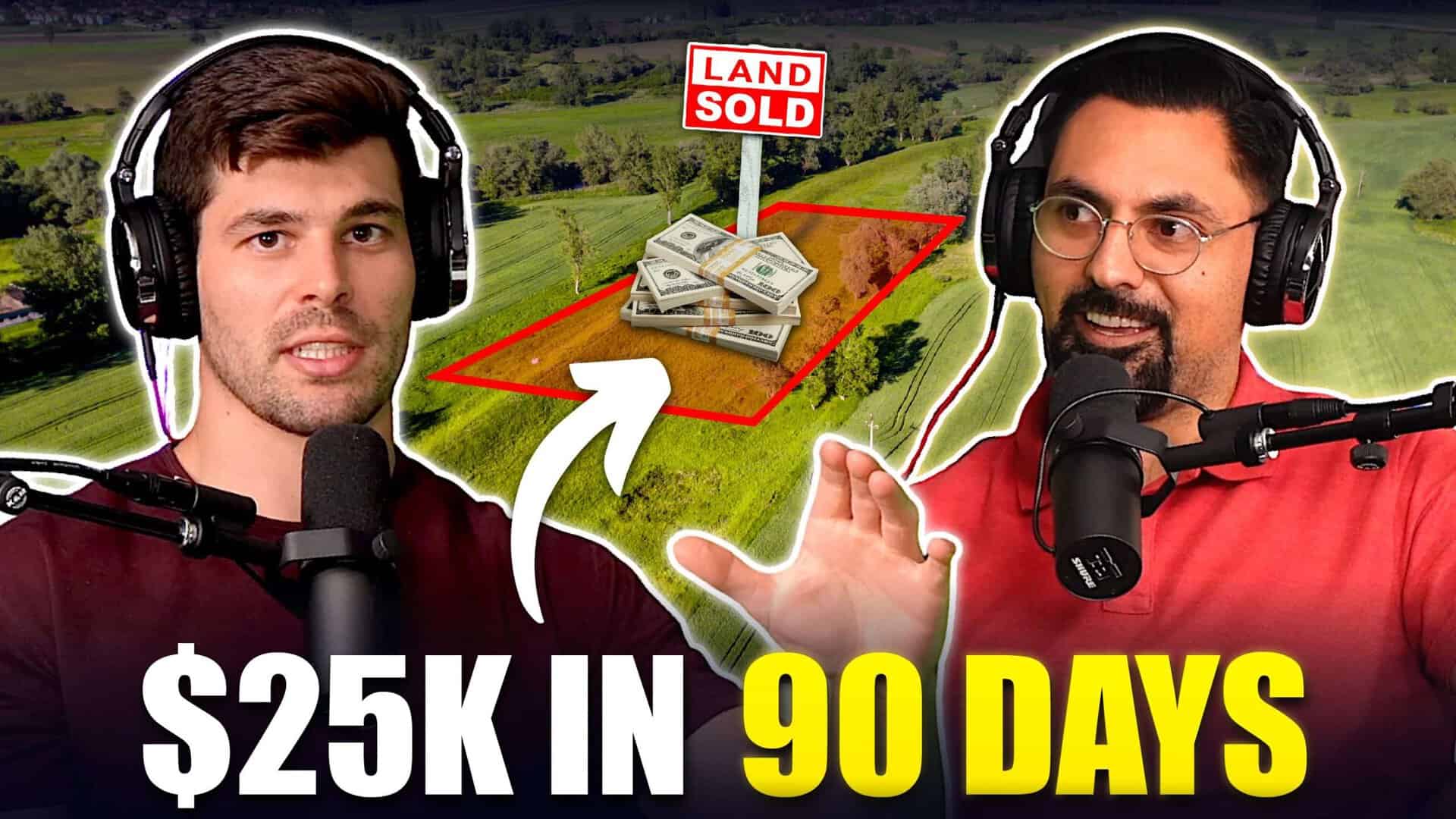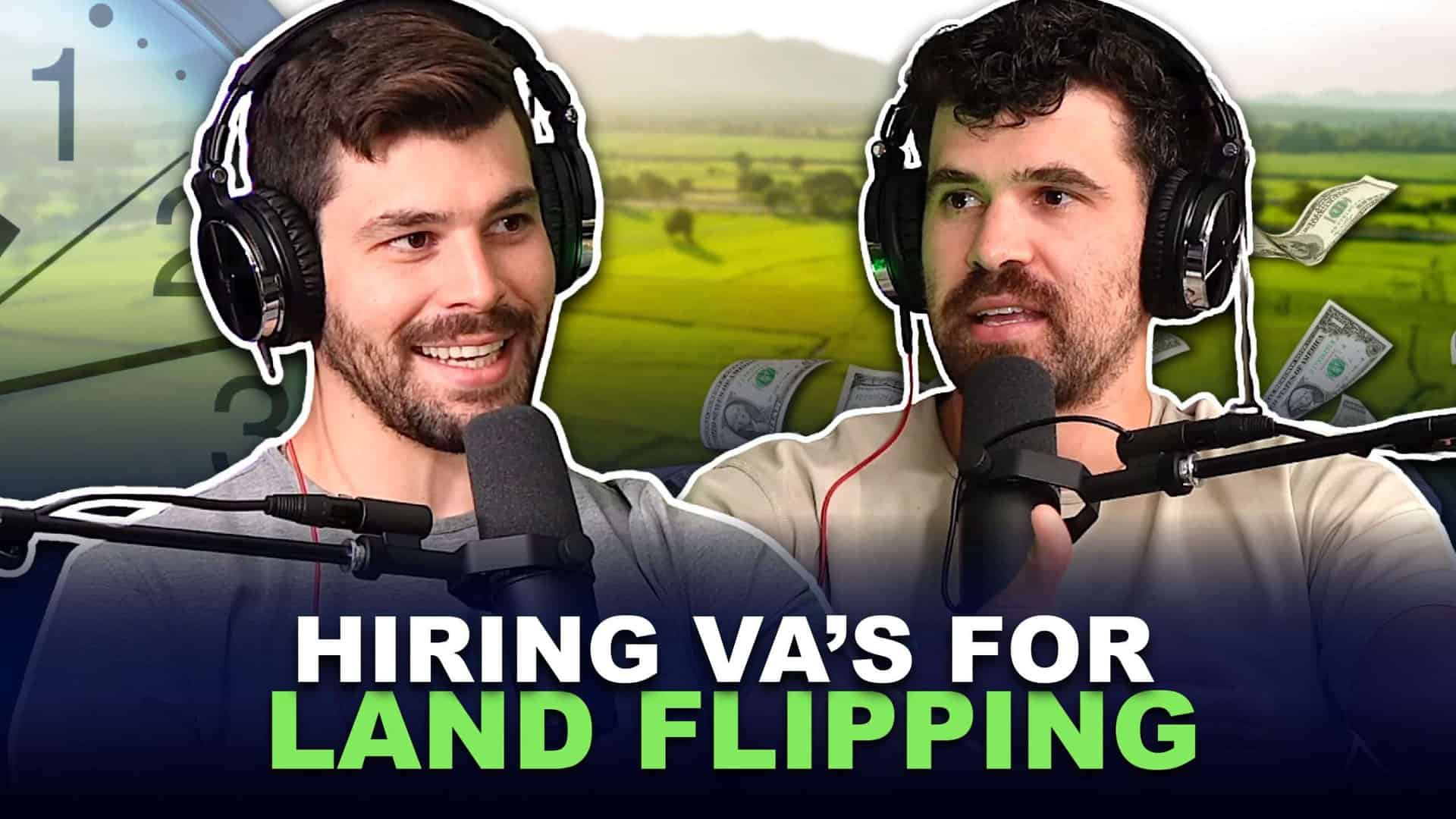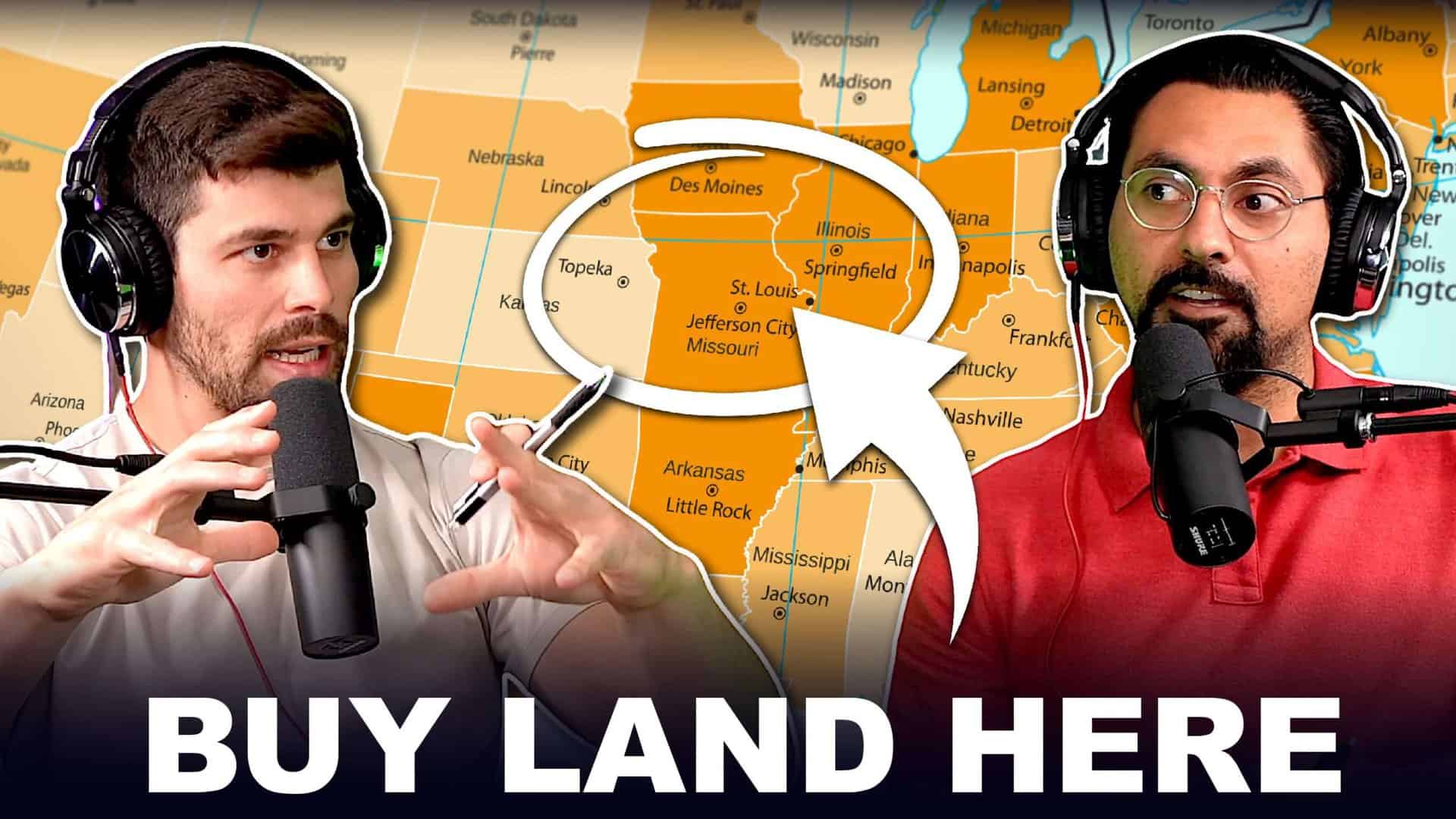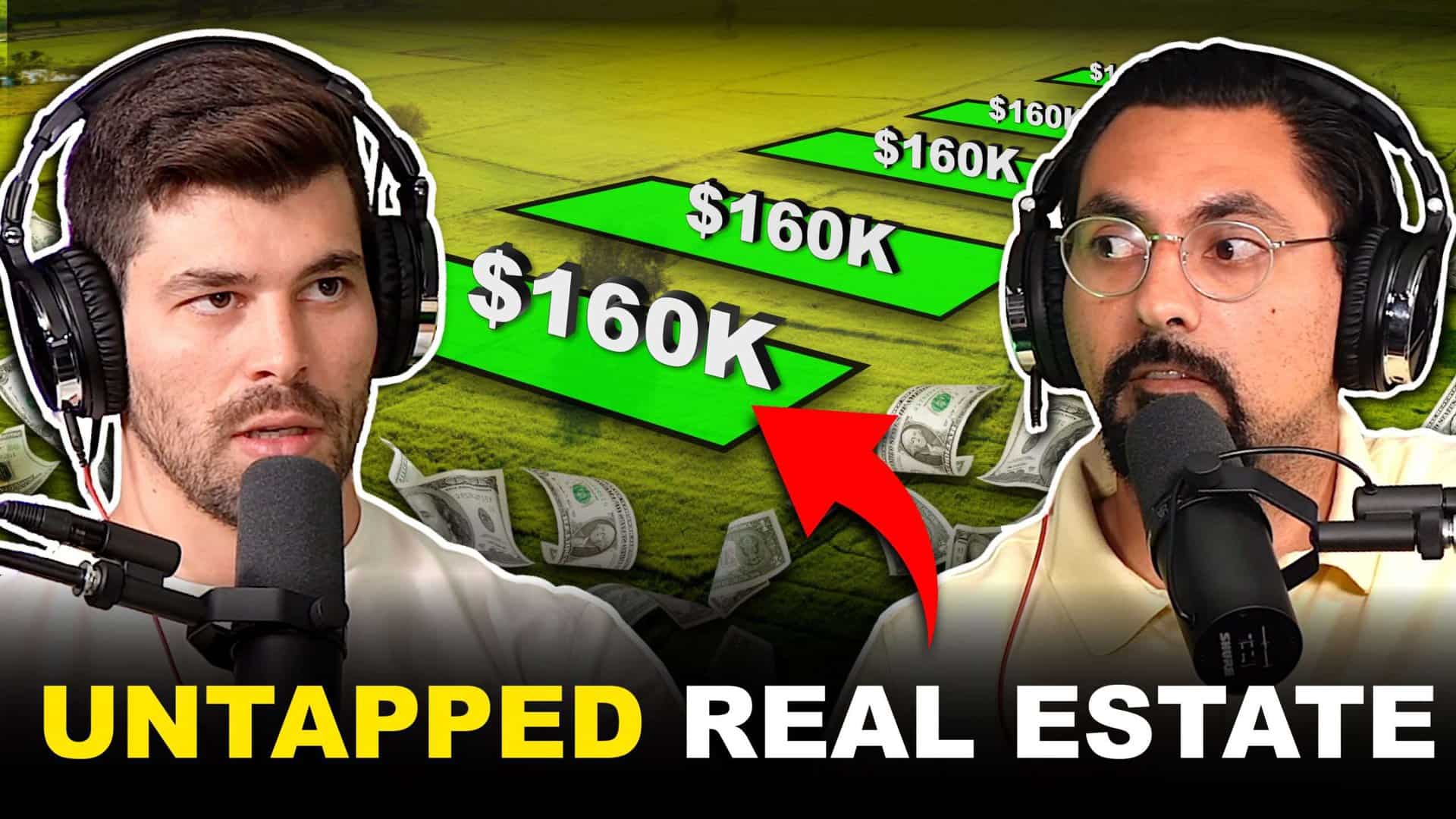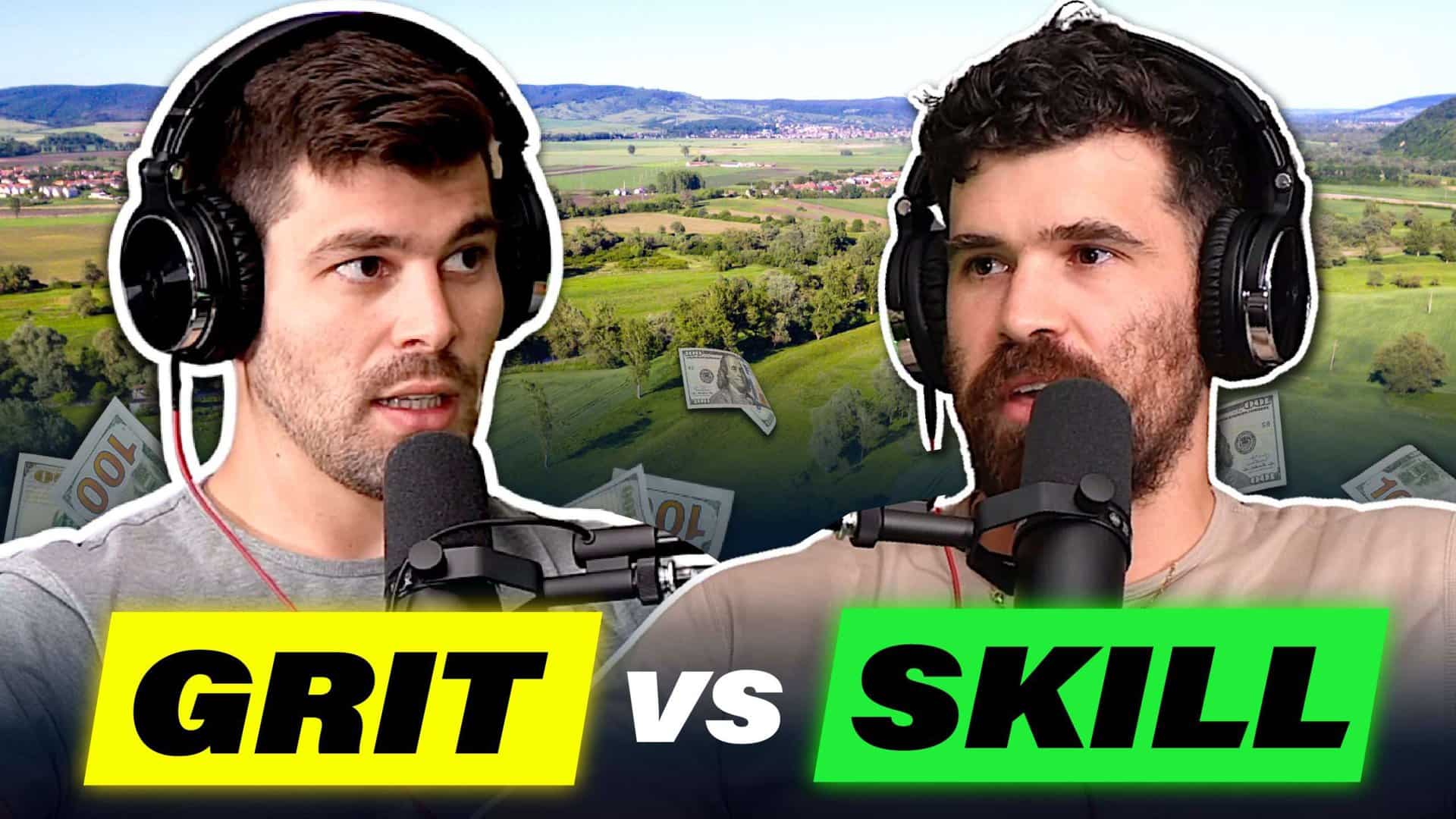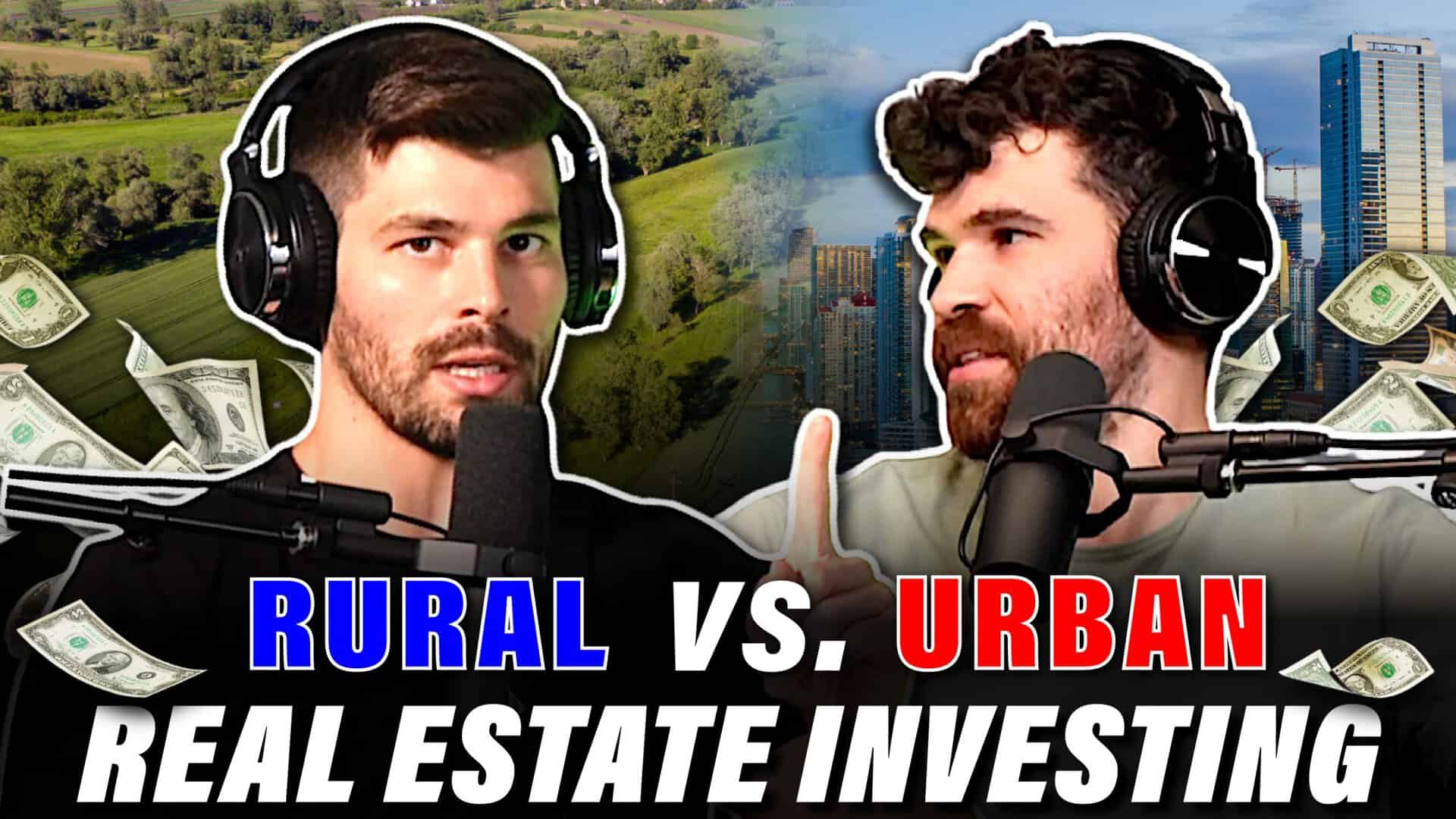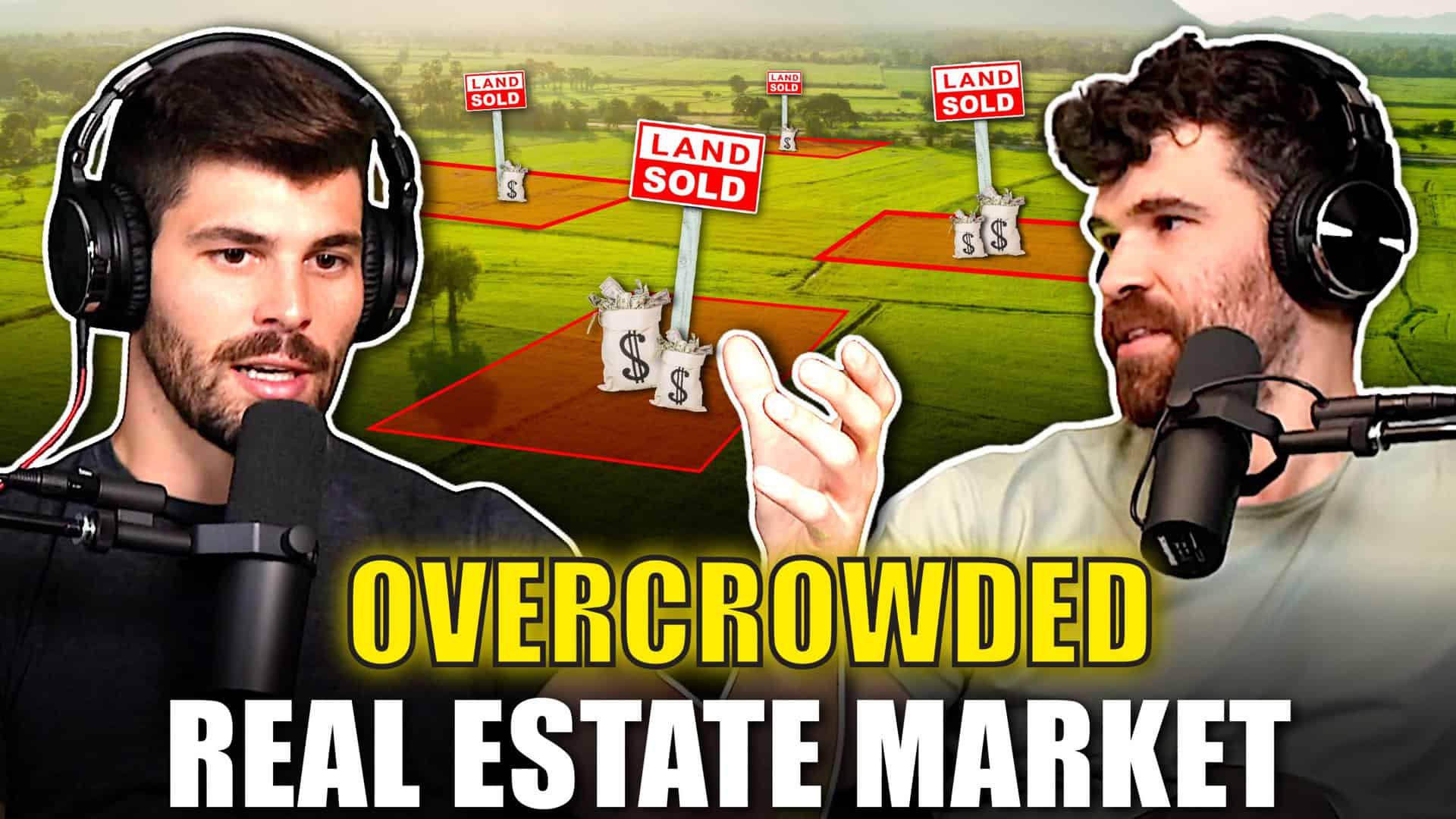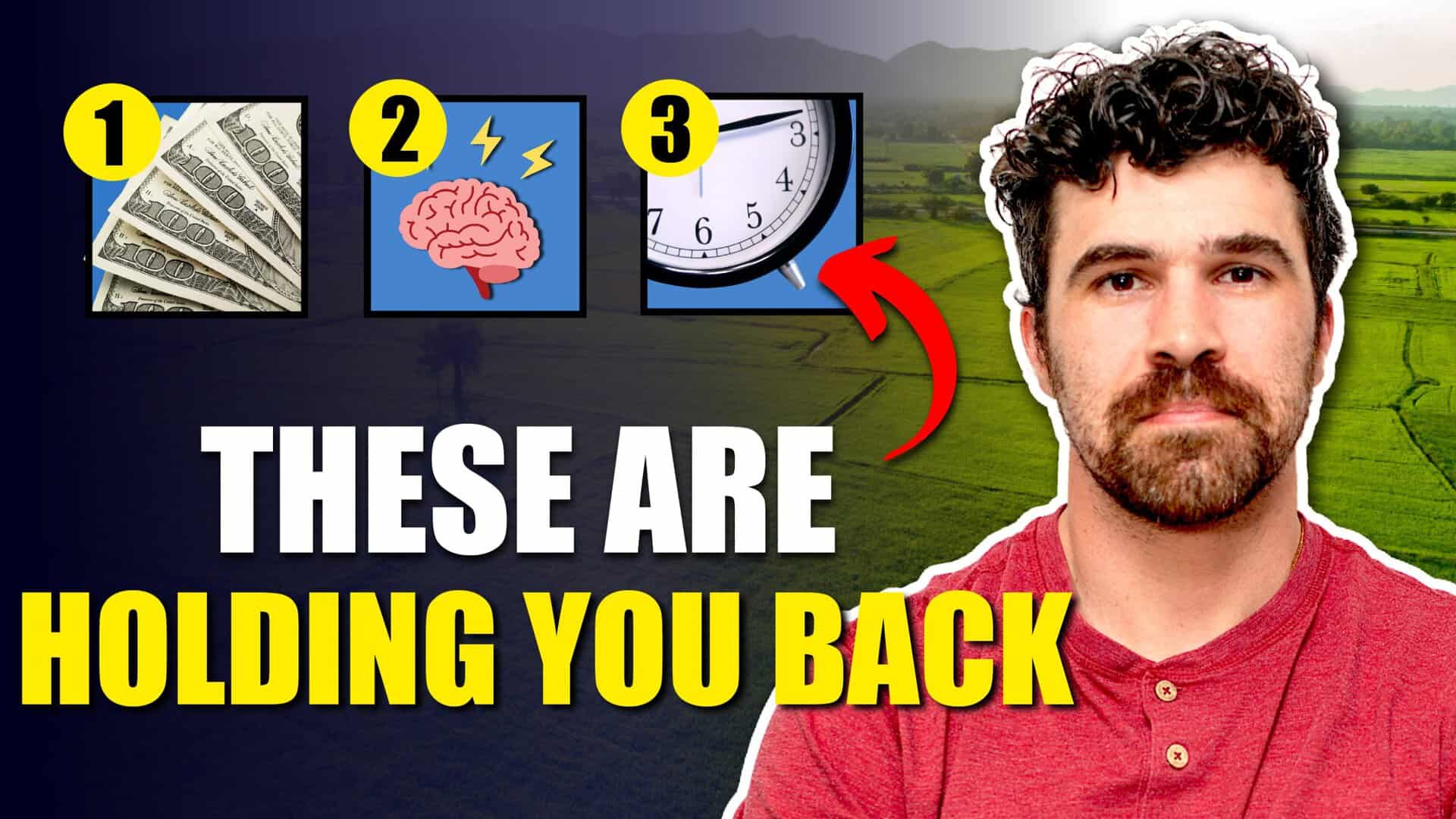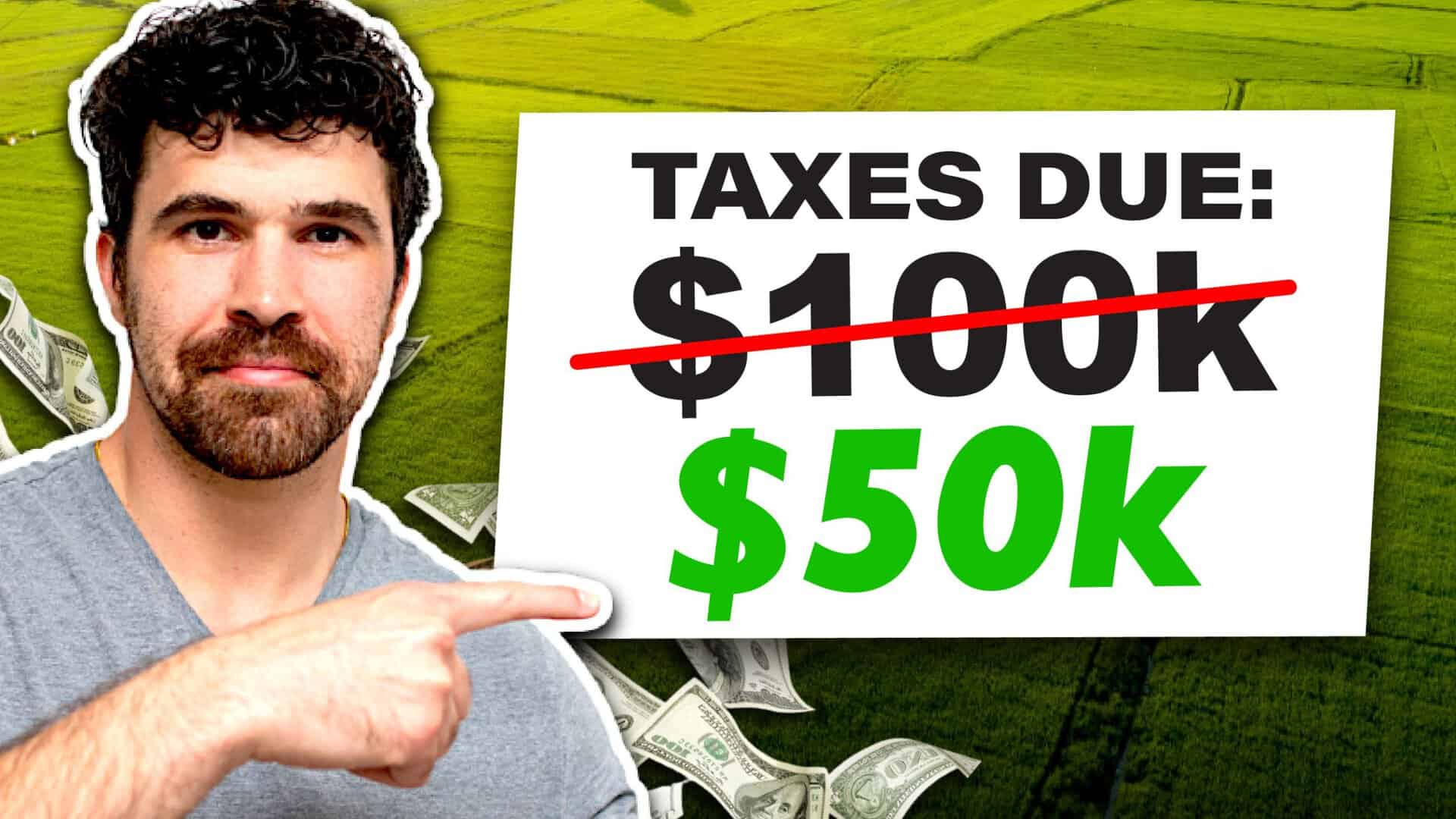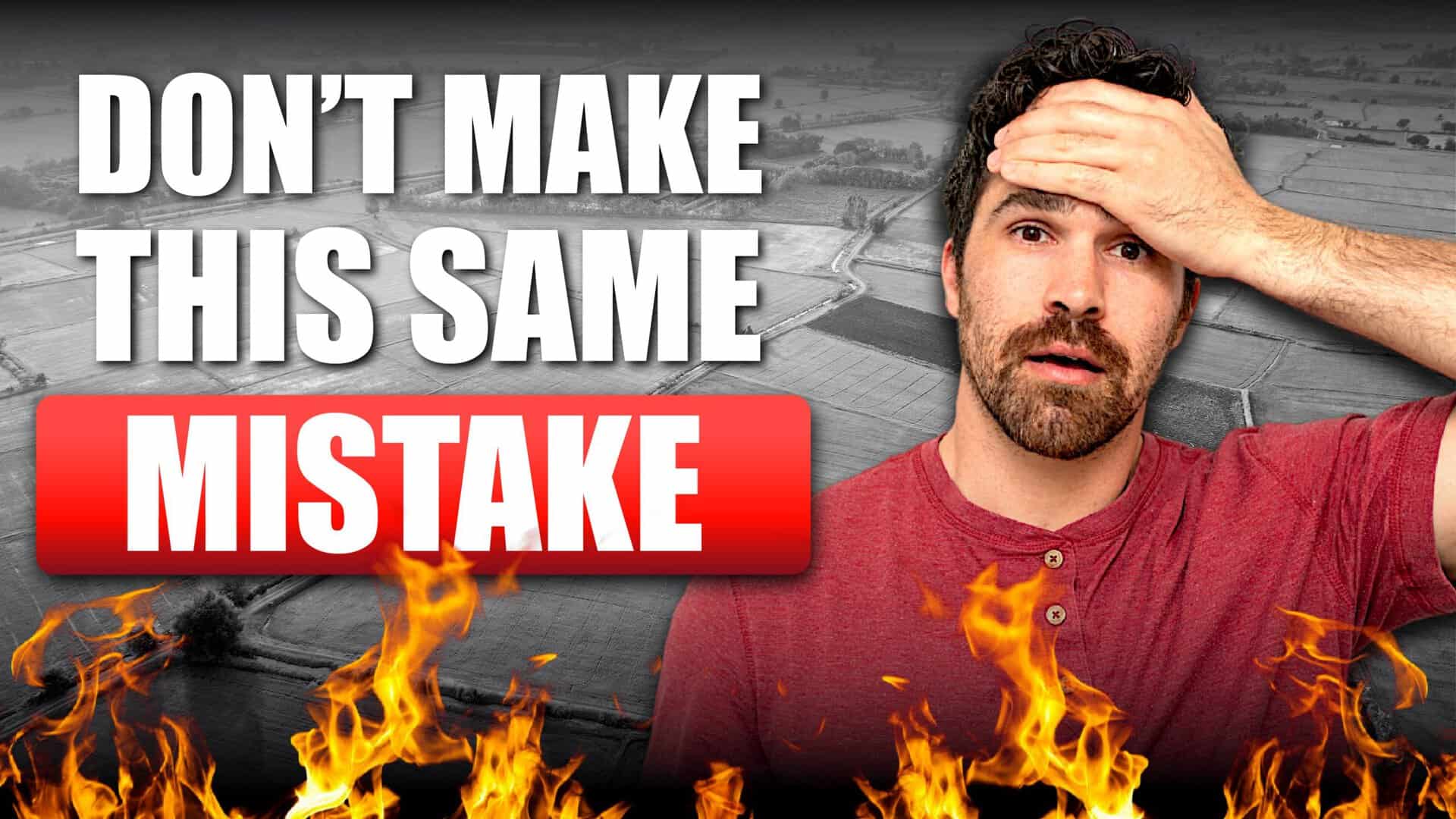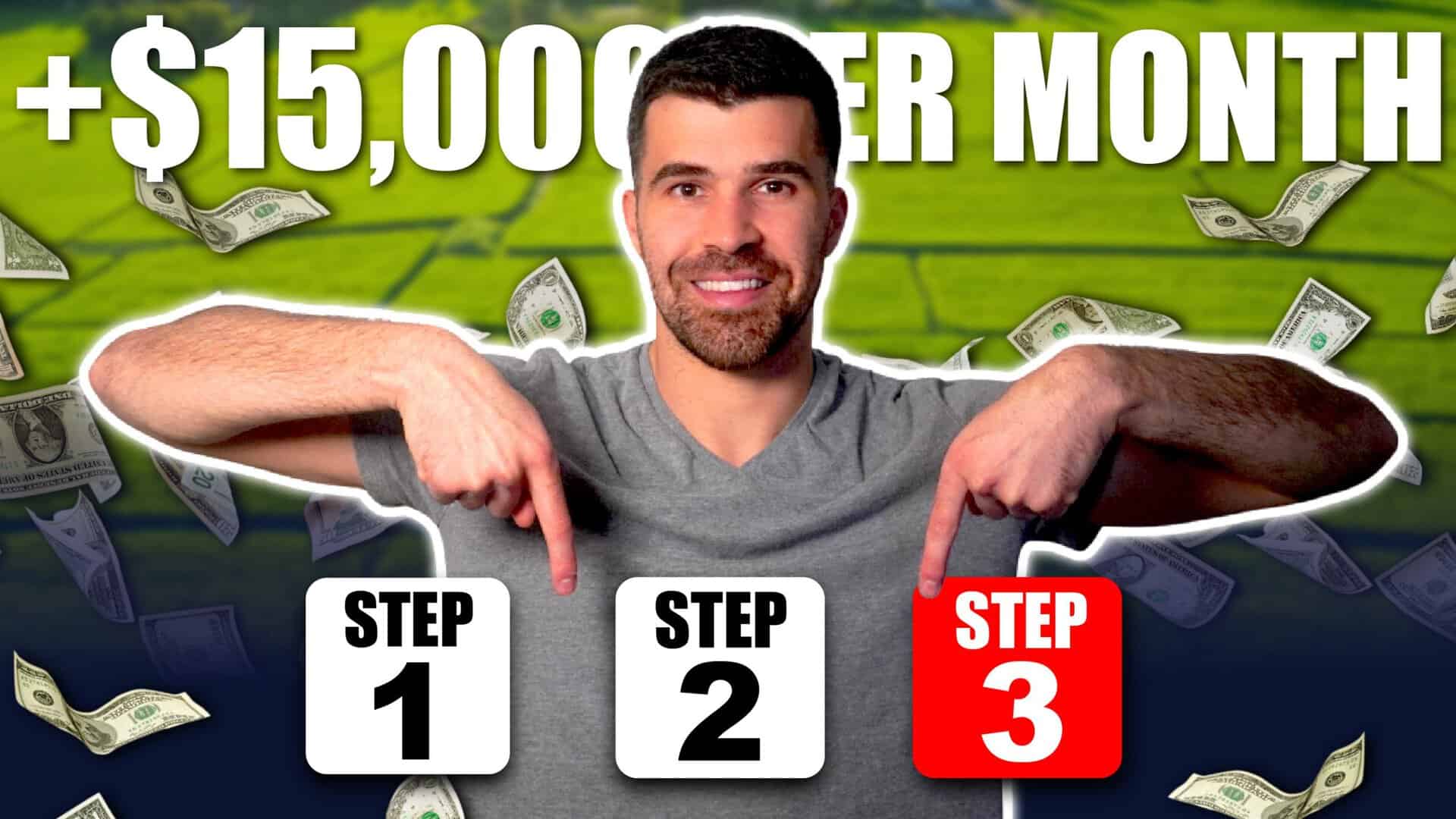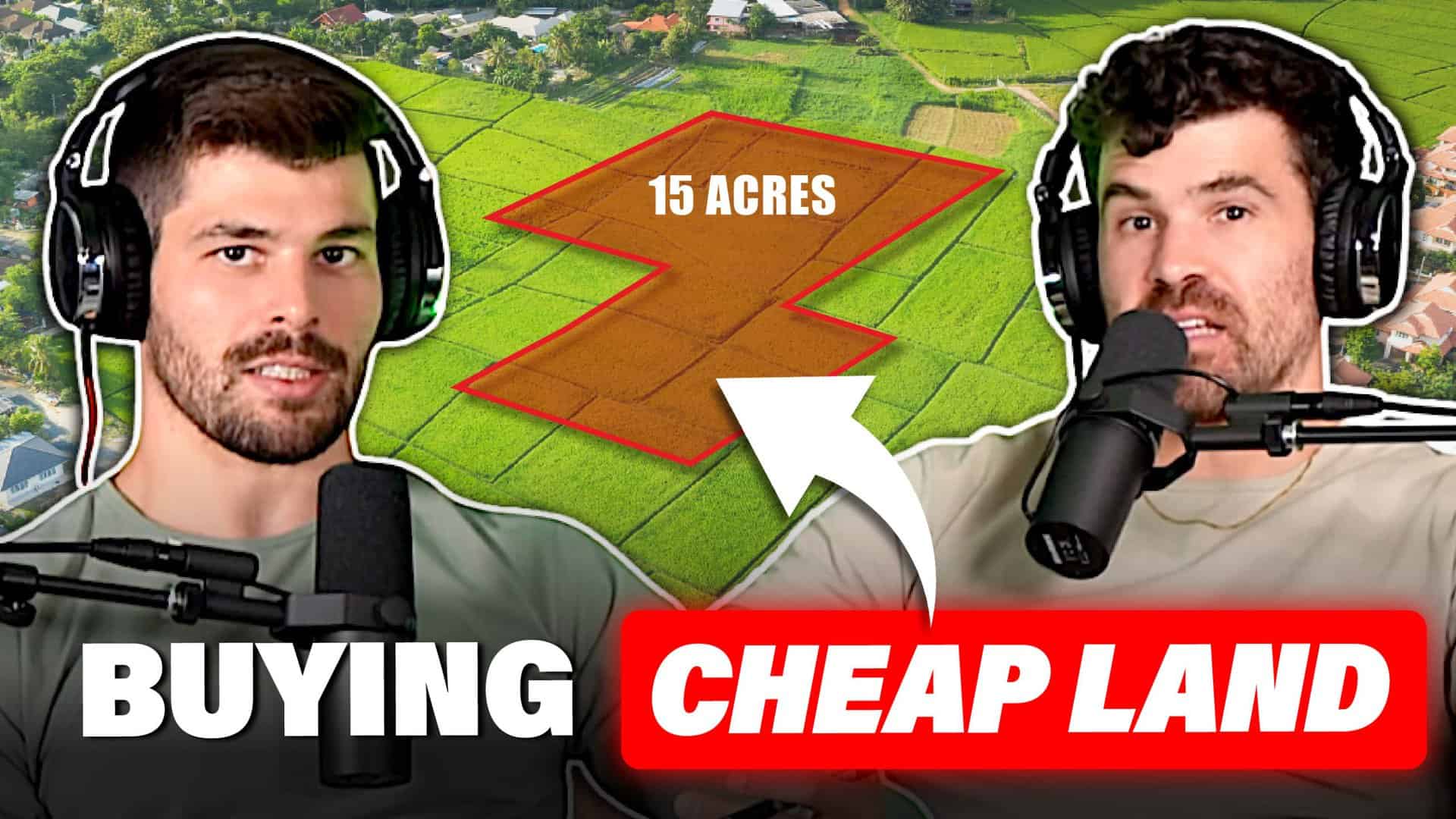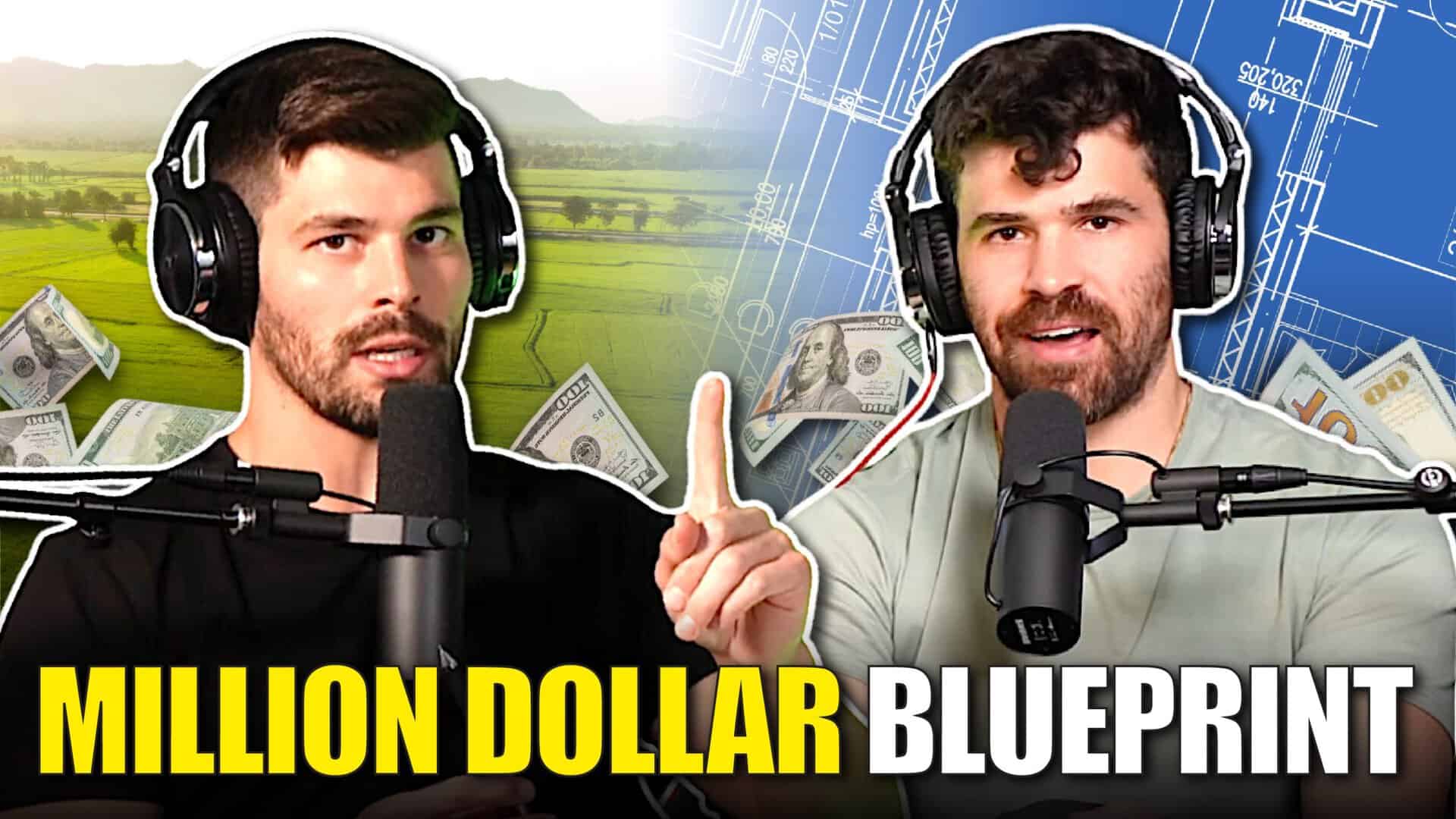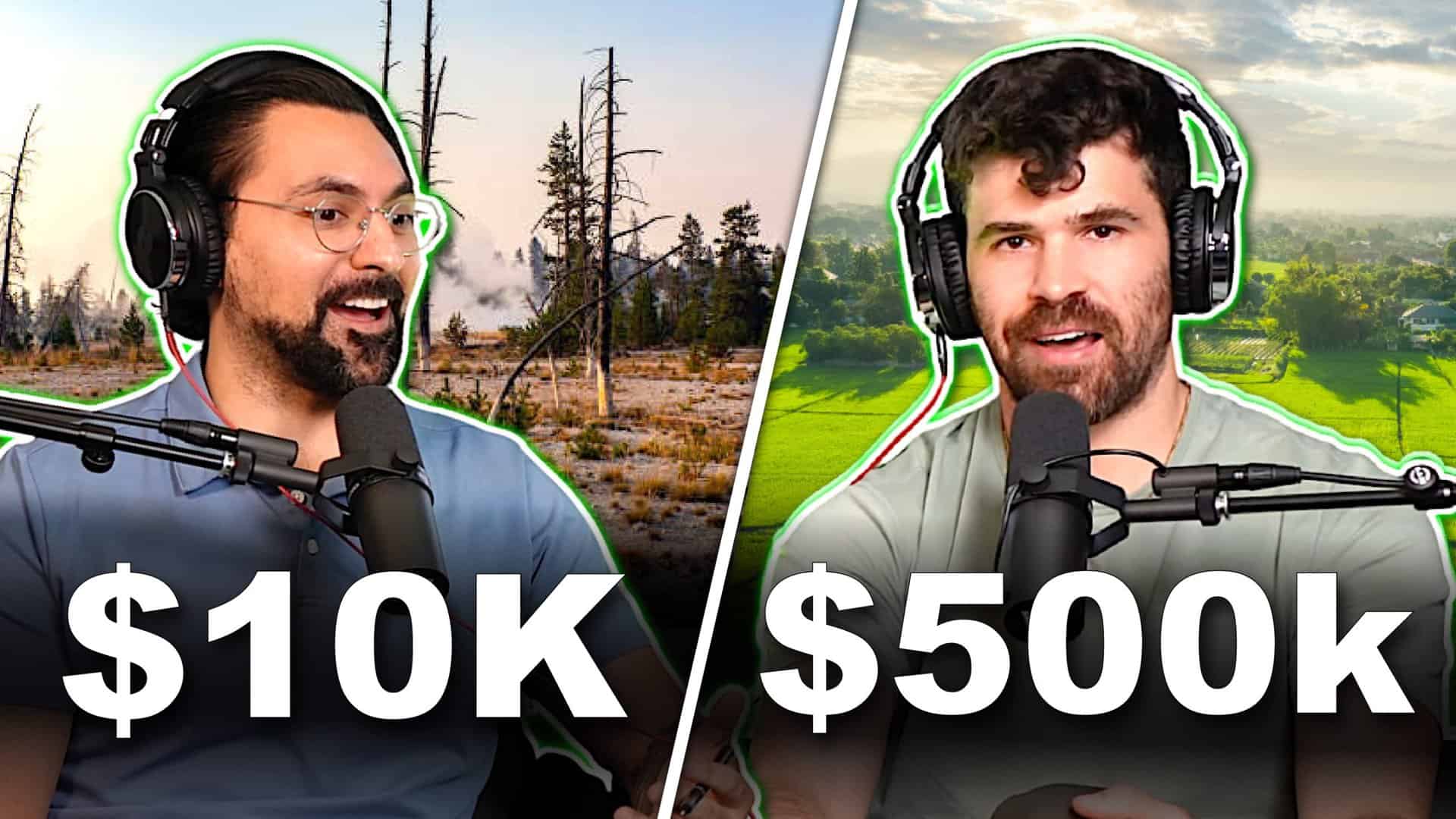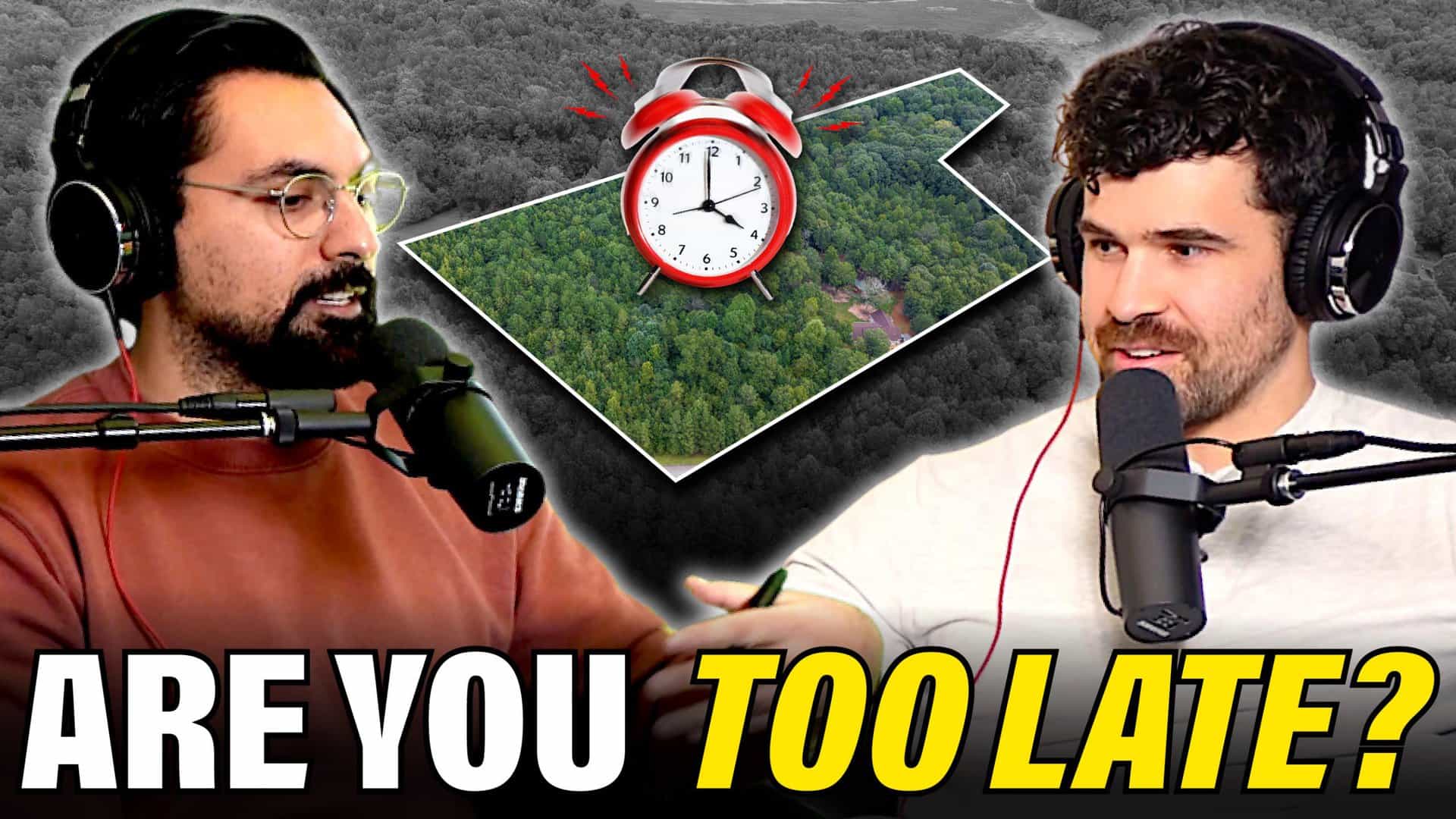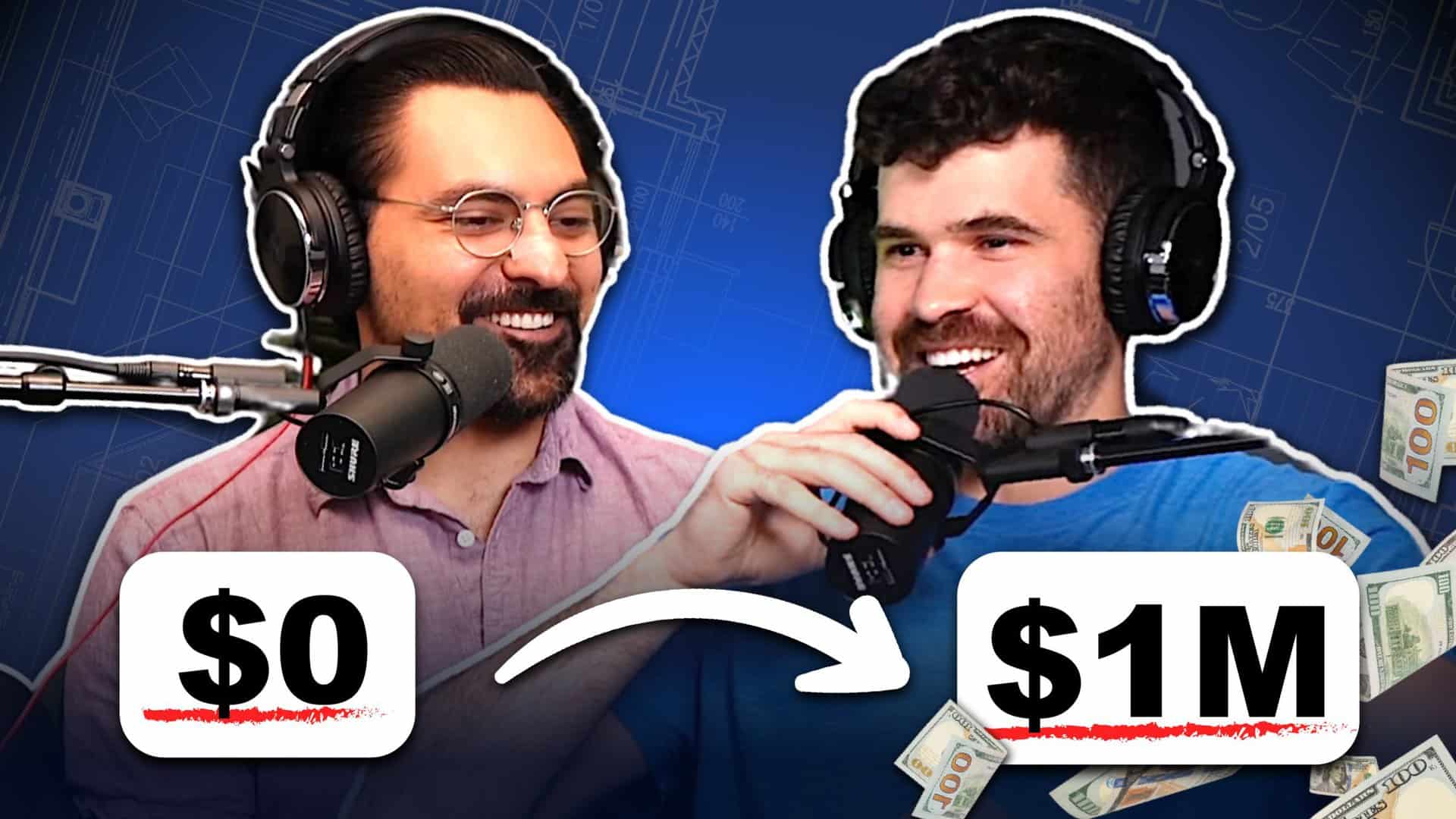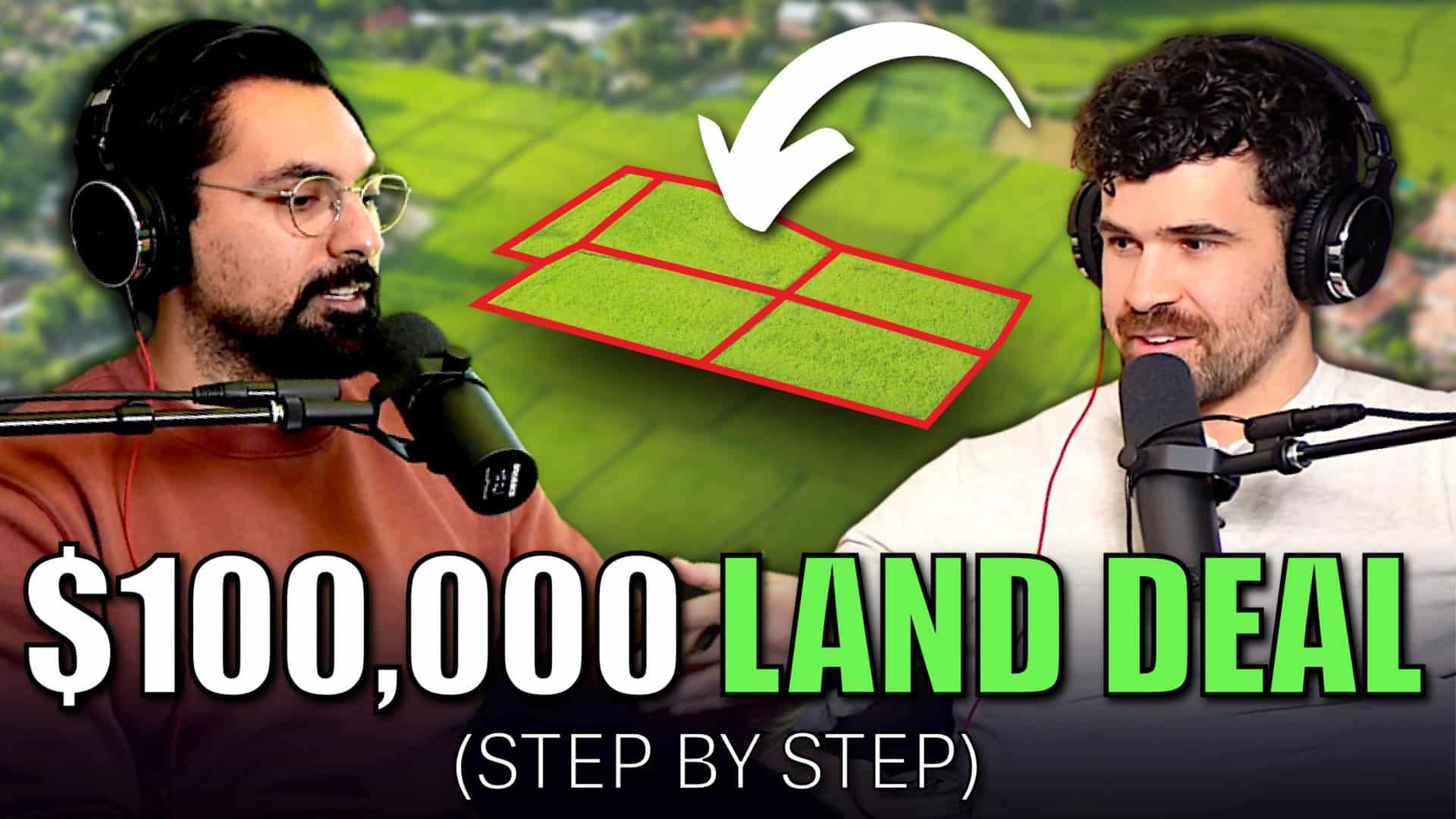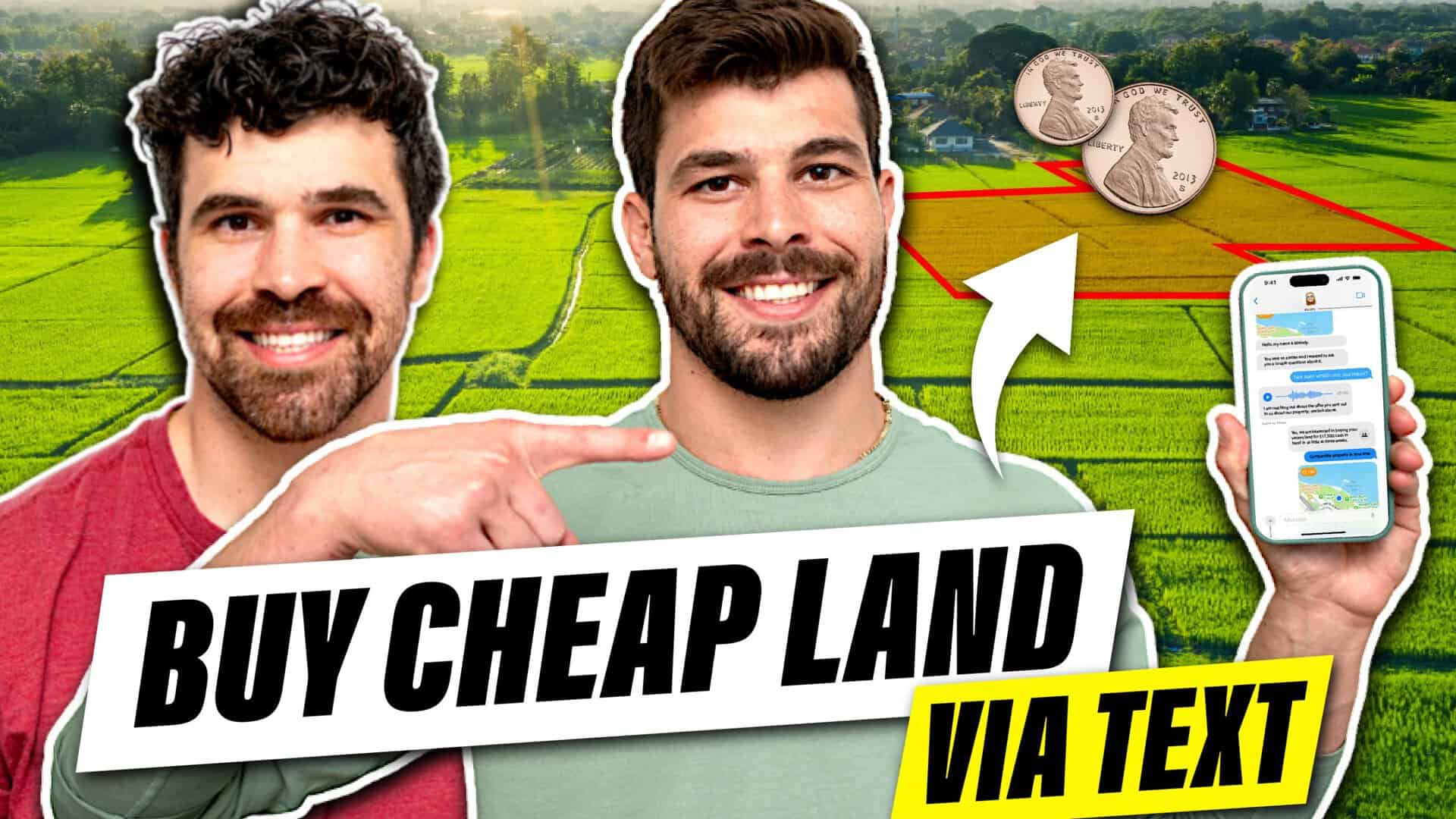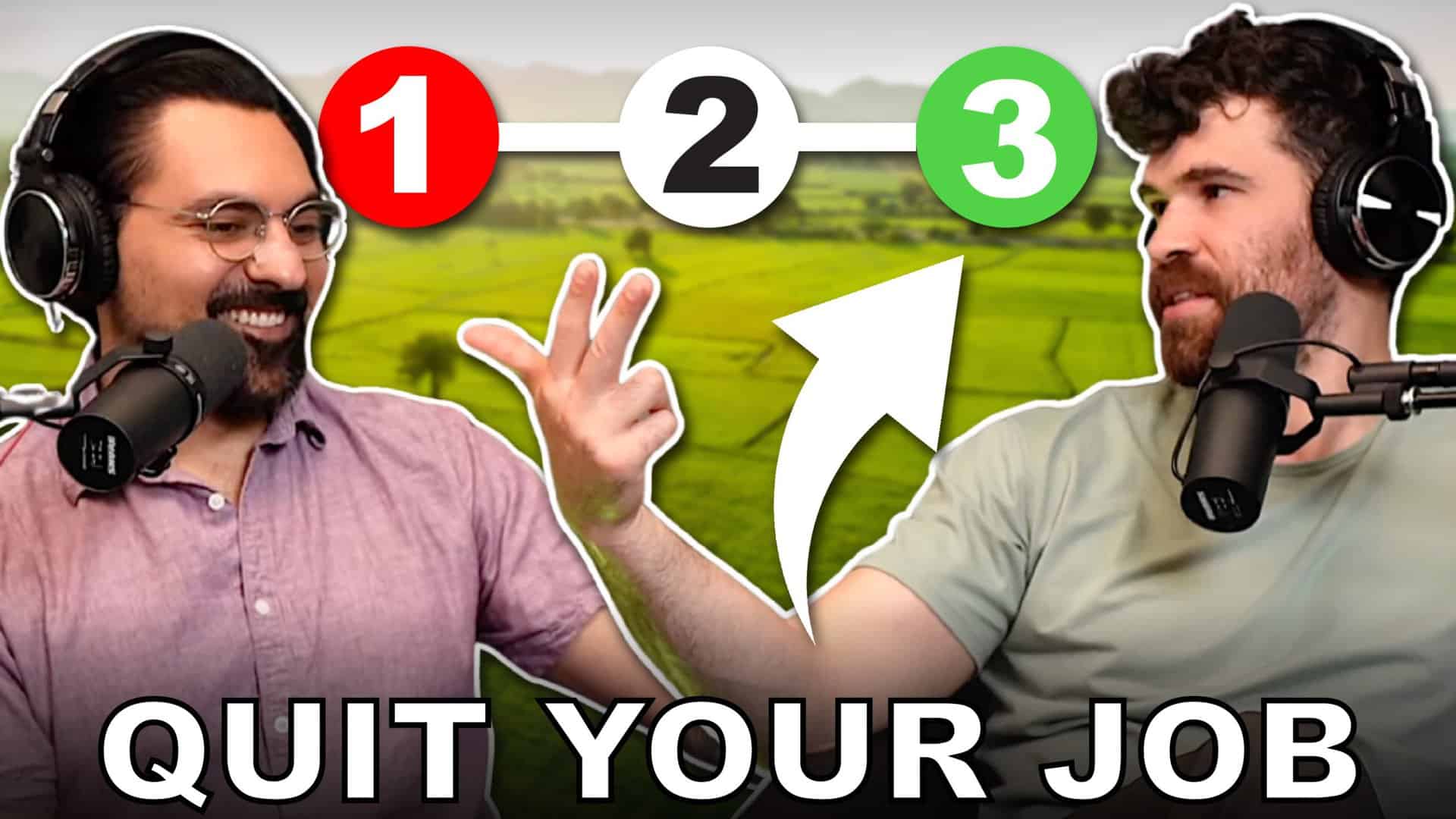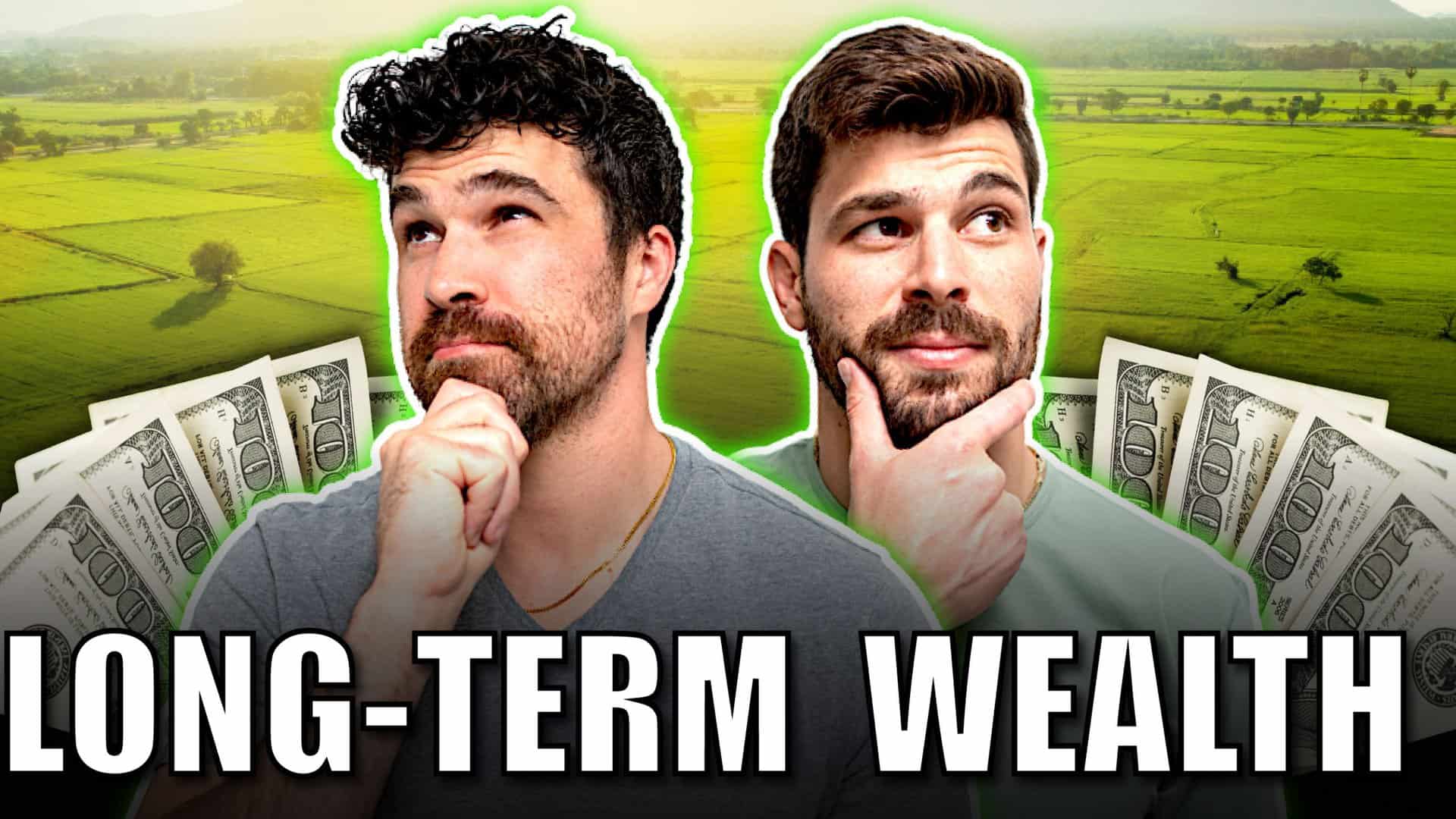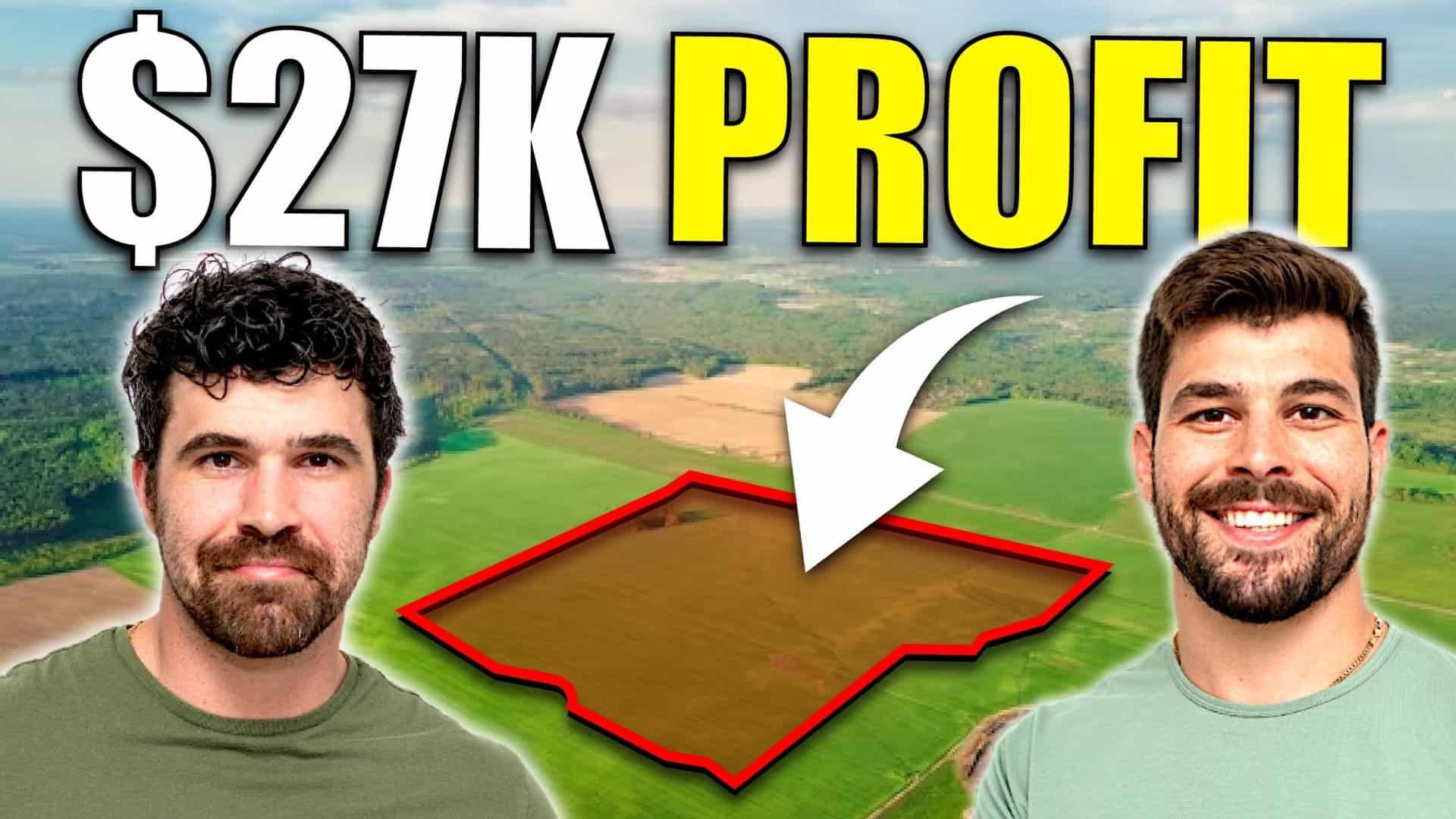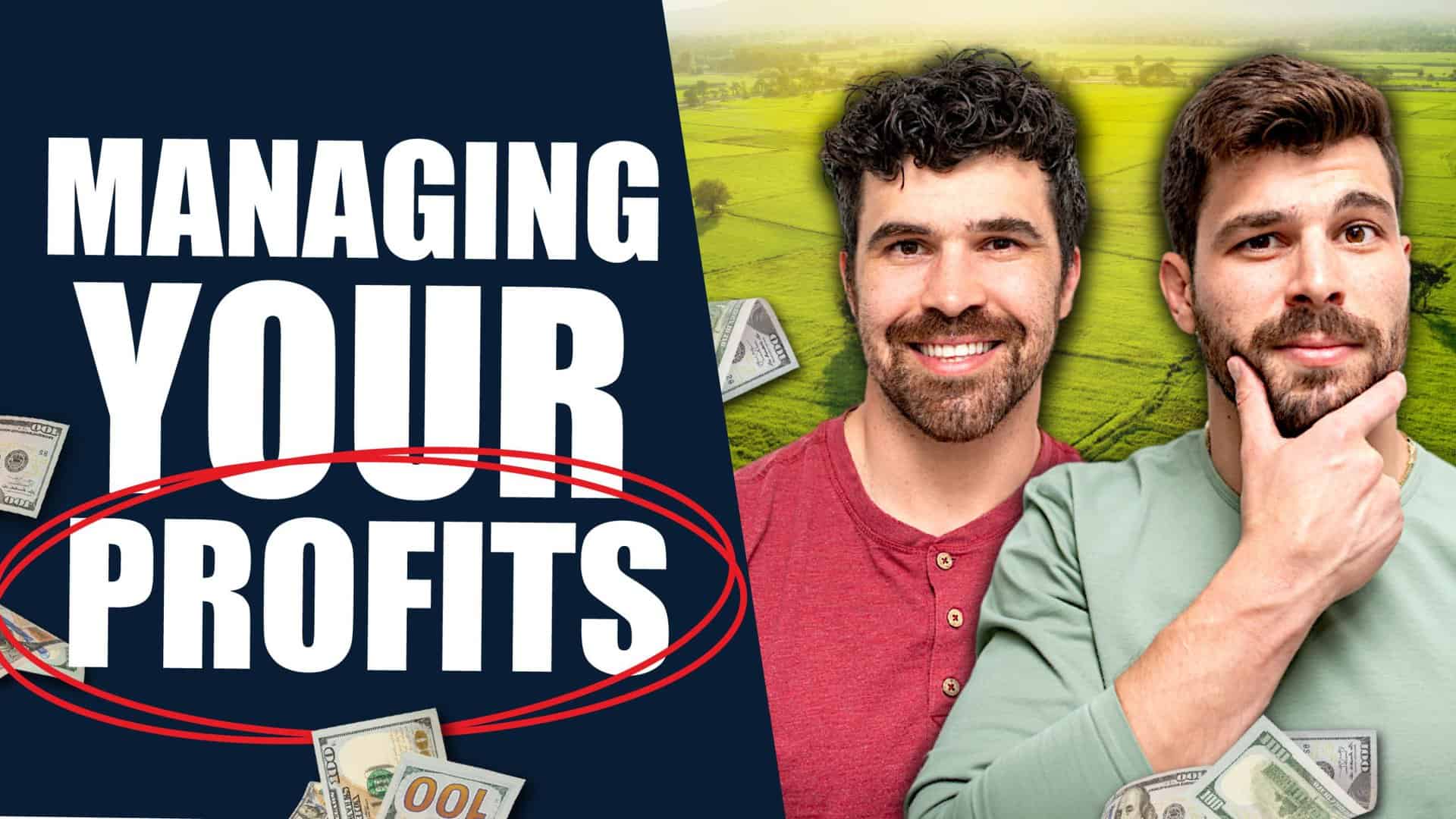The 5-Step Roadmap to Your First Minor Subdivide Deal
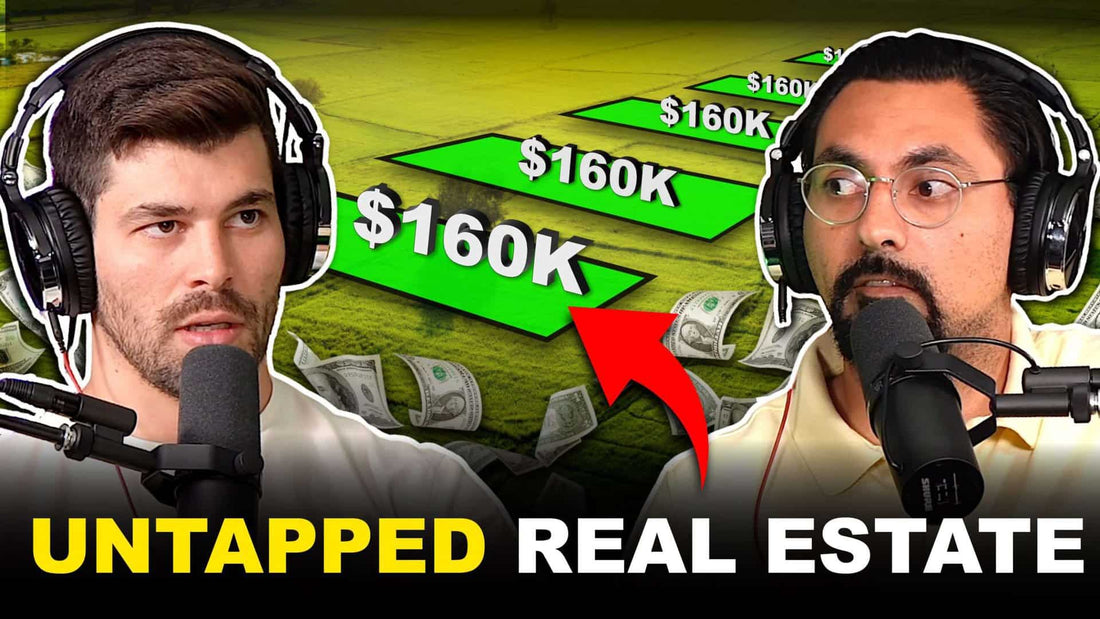
Turn 5 Hours a Week into $100K Per Month by Flipping Land
" target="_blank" rel="noopener">
Featured

5 Sales & Negotiation Tips That Will Get You Bigger Deals
September 27, 2023
How Much Money Do You Need to Start Investing in Land?
April 15, 2024
Leaving Software Engineering Job to Invest in Land Full-Time | Mike Apke
August 2, 2024
Top 3 Questions Land Flippers are Asking in 2024
September 14, 2023
Enhance Your Real Estate Pictures Using Box Brownie (EASY)
March 13, 2024In this episode, hosts Daniel Apke and Anthony Weiler dive into the five steps for successfully executing your first minor subdivision. They discuss how targeting larger parcels of 100 acres or more and offering 80-90% of market value can be a competitive strategy.
By leveraging tools like The Land Portal for road frontage data, you can strategically select properties that are ideal for subdivision into smaller, more valuable lots.
Dan and Anthony emphasize the importance of understanding local zoning regulations and working backwards to determine the feasibility of your subdivision plans.
They also share insights on effective marketing strategies, such as " target="_blank" rel="noopener">cold calling and texting campaigns, to attract high-value leads.
Watch or listen to the full episode below to get an in-depth look into each of the 5 steps to getting a minor subdivide land deal so you can start scaling your land business today ⬇️

Join our free Discord channel!
Engage & network with thousands of new and experienced investors, participate in weekly Deal Reviews, and more!JOIN
Watch the Full Episode Here
https://www.youtube.com/watch?v=5VE-O3oKHmo
Listen to the Podcast Here
View Transcript here
Anthony: If you’re targeting, let’s say 100 acres or above and you can offer them 80 to 90 percent of market value, then you could split that up into let’s say 10 tens or five fives, whatever it may be. You could be a hell of a lot more competitive.
Dan: So on the land portal now we have a road frontage capability on our YouTube.
I did like 20 to 50 acres between two to 5, 000 feet and those properties were insane and our whole business. When starting out is about efficiency and sending out your mail and getting the leads back and getting the PA as soon as possible. Getting this PA back as soon as possible. Doesn’t necessarily apply to something like this.
Cause this is a little bit different. These are not 20, 000 profit leads.
Anthony: Like when I first started, you know, I was going for buy for 20 sell for 40. It’s like, okay, I’m going to do these all day. And then once you get more deals under your belt, you start to have this understanding of like, Oh shit, this is actually possible.
Dan: Hey everyone. Welcome back to the real estate investing podcast. Today’s topic we’re discussing. Steps to doing your first minor subdivide. So this is going to be a walkthrough on actually the chronological steps I have about five steps on here steps one through five. I’m doing a subdivide, but I’m your host Dan Apke today I’m joined with Anthony here at our studio in Cincinnati.
Welcome back, Ant.
Anthony: Thank you. Happy to be here
Dan: So you said right before we got on air here You said we you get a lot of these in coaching calls Anthony does a ton of the coaching So he’s very in tuned with what? People are one on one what people are going through behind the scenes and what they’re looking for But you said you get a lot of requests on sub divides and questions.
What are you hearing out there?
Anthony: Yeah, subdivisions have just been a really big topic I would say probably the last six months especially with the land portal and the features that we have with the road frontage And people are like, hey, how do I go after these bigger deals? I want to do a blended approach It only takes a couple of these and this will completely change my business.
What exactly do I need to do? How do how do I strategize this I can do filters on the land portal but Walk me through this Anthony and there’s plenty of people in the community Whether they’re my coaching student or not that this is probably the biggest topic right now in my opinion
Dan: I think so too and it’s it’s it’s a such a high value topic because all of a sudden you can take and we’ll get more Into this in this episode, but you can take your 40 percent offer and put it to 75 85 90 Depending on the size and the road frontage there And that’s what I challenge someone out there to do is I was thinking before this I was like you can literally have a formula You Based on the acreage and the amount of road frontage you have and the restrictions.
So, you know, the restrictions and work backwards and saying, Oh, I have 2000 feet of road frontage and it’s 50 acres. I can get 10, five acre lots out of this and have that formula in your head. I don’t know what that is. I just made that up. But you can literally have a formula so you can back into it and offer things accordingly to that.
Know what the return is you’re making. And I challenge someone listening to kind of put, see if you can put something like that together, offer percentage based on the road frontage and acreage and the restrictions in the area.
Anthony: Yeah. It’s funny you bring that up. That’s actually something I’m playing around with within my own land flipping business.
Like how can we find that exact formula to get those deals for blind
Dan: offers? You’re saying
Anthony: blind offers? Yes. We’re also doing other approaches to like texting campaigns or cold calling what’s going to be the best bang for our buck and what those results look like. But there’s just so many opportunities that you can have with this.
Dan: And it’s, it’s a good way to go around competition too, because people are offering, first off, a lot of people aren’t offering 90 acres in a decent area that’s worth 500 grand because they don’t have, you know, they don’t feel confident in the funding or their abilities or whatever it is. So at the top, there’s a lot less competition as well on, on both fronts.
Anthony: Yeah. And if you think about it too, if you’re targeting, let’s say a hundred acres or above, and you could offer them 80 to 90 percent of market value of. That overall acreage size then you could split that up into let’s say 10 10s or 5 5s Whatever it may be as you know with those larger acreages The price per acre is going to be a lot less versus the price per acre for like a 10 or 5 acre parcel So like you mentioned you could be a hell of a lot more competitive
Dan: Yeah, and I was thinking just while you’re talking like I said offer 100 and you can if it’s a really really good opportunity for sure But value wise I don’t really think you should ever I shouldn’t say you shouldn’t but You The value that we offer with the fast amount, you know, the fast cash to them, no fees on the real estate side, we’re paying for a lot of the closing costs.
We’re doing the work for them. The most you really should be offering value wise. I feel like 85%. Of us giving them 85 percent of market values, really like 100 percent on the market. Cause then you don’t have the realtor and the time delay. We’re getting them money so quick. So I feel like 85 percent closer to a hundred percent on the actual market.
Anthony: You know, I completely agree with that, especially with those larger parcels. I mean, you’re talking about hundreds of thousands of dollars, all cash
Dan: closing in like two to three weeks, right? So how long would that take them to sell on the market?
Anthony: Yeah, and it all the bigger properties take longer. That’s true.
Especially if you’re splitting up into multiple parcels too. Yeah, absolutely. So we, you’re saying that you have five steps on your list, right? Yeah.
Dan: Let’s get into those. So the, the first one is selecting a market and do the same things you guys are already doing. Um, and if you’re planning on subdividing, look at, you know, five and 10 acre part, uh, parcels, because a lot of times that’s what you’ll subdivide them up into all depends on the land.
Obviously you can get some too, but I love that five acre range. Like see what five acres is selling for. but once you have your guys’s market, so I always say pick 10 markets or so that work and then filter those down and maybe you have a few left. Just call those few that you have left that you really like and you got to find out the restrictions.
Cause I like to back into this. People, I’ve had people bring us subdivide deals recently and we’re actually working on one right now that we thought was a subdivide. That’s not, we’re still going to buy it. It’s 450, 000. Um, but we thought we had the ability to subdivide it and we found out the restrictions aren’t really there.
So, I like to work backwards in this part, do everything the same, look at five acres, all of that price, do your whole market selection similar to what you would normally do. And we have whole other episodes if you guys haven’t heard that on market selection. but back into it and find the restrictions before you go.
And I have three questions written down, but I want to get your opinion on that part first.
Anthony: Yeah. And what I tell my coaching students too, is if you’re already targeting an area, your pricing is done on the front end already to anywhere from, let’s say two acres to 20 acres or even above, depending on how many acreage ranges you’re targeting.
So you have all that data on the front end, go ahead. Since you have those markets selected, you have the pricing done. Call the counties, find out what those restrictions are. That way, when those leads come across your plate, you’re like, okay, I can split this up into 10 tens, or I could split this up four times and I can do it to as many acreage sizes as I’d want to.
So it just gives you a lot more opportunity when it comes to strategy.
Dan: Cause that’s how you’re going to end up pricing these is you’re going to say, Oh, I can split this up into. 10 five acre lots. One five acre lot is, you know, 30, 000, which will give us 300. Oh, I can offer 130 grand, you know, and you’re backing into it like that.
Cause that’s going to double your money essentially. But a hundred, but that, what did I say? Uh, 50 acres, I said 10, five acre lots, right? But that 50 acres as a whole might be worth 150 or 160 like that. And that’s how the math works It’s like going and I always use the costco analogy going and buying a bunch of hot dogs at costco versus baseball And getting a seven dollar hot dog versus going to costco and getting a hundred of them for 35 cents each Same philosophy with subdividing.
We don’t need to get into that. But when you’re backing like anthony said You’re backing You mentioned, uh, you already have the data. So is that what you were thinking is go back to your previous counties if you’re going or just for going forward?
Anthony: I, I think so. I definitely take a look to to see how many property records are available to you because you’re targeting these larger acreages, there’s going to be a lot less property records.
So you’re going to probably have to expand your scope in terms of the areas that you’re going to be targeting. But you already have familiarity with the county, you’ve probably already have targeted it before. And you the pricing is on the front end, why not just see what the subdivision regulations are.
And if there’s good property records, why not? So I tell people go after it, you already have. local knowledge working the leads of what expectations are. So if subdivision regulations check out, I mean, I have no problem with that.
Dan: Cause then you can back in and then you can actually do the math on these.
So if you have 50 acres and you can split it into 10, five based on your road frontage and you know, you’re going to get, what did I say? 300 grand on the back. And now you can go to those 50 acre lots and offer, you know, 130, 150 grand when really whatever the situation is there, but that’s the math behind it.
And the three questions when backing into the County and figuring out what, Restrictions they have that I have written down here. What, what are, so you need to ask them, what are the maximum amount of splits you can have? Cause some would say you can only split a parcel twice or three times or five times.
So the maximum number of splits allowed the minimum acreage allowed. So, and do it, you know, if they only let you split it into five acres or 10 acre lots, or, you know, some depending, you can’t cut it more than in half. So for properties 50, you can’t cut it over 25 acres. So you want to ask that minimum, acreage allowed to split.
And then based off that, are there any restrictions that come up when you split it to certain sizes? So sometimes you go under 10 acres. Oh, under 10 acres, there’s no mobile homes allowed under 10 acres. You have this and this restriction under five acres, whatever that is. Those are the three questions I have.
And am I missing anything?
Anthony: No, I think those, those are all there. And it’s sometimes it’s a mix of all of those two, like you could split this up into, let’s say, Three parcels and the smallest you could go is five acres and they’re like, oh and you have to have you have to meet with The board as well too, right?
So it could be a mix of everything, right? I always tell people call the county ask those questions definitely but always get a PDF copy of those zoning Regulations as well to look for those minor subdivisions and make sure you really analyze that.
Dan: They have a zoning document if you type in Hamilton County, Ohio planning and zoning subdivision, minor subdivide, something like that.
You’ll get a sheet and just control F find minor subdivisions. They usually have the regulations right there. Always confirm that with the County. So some, Some areas don’t have it most do though from what I’ve seen.
Anthony: Yeah, most of them do they it’s been a couple times where I call Like, oh, we don’t have any documentation.
I just have it on a sticky note. I’m like, okay Well, I want a little bit more information Is there anyone else I could talk to you? But sometimes if you’re in rural America, it could be hard to find that data What I do recommend though Once you get a PDF copy and you’re unsure with how to read things I leverage AI all the time.
I’ll just put that into chat, GBT and to act like a land flipping or a title expert and to really break down minor subdivisions. And it just lays that all out for you, but definitely double check that of course, but it just helps accelerate the process.
Dan: Makes sense . So step two, I have. So step one was selecting a market and working backwards on the restrictions.
And that’s a part of your selecting a market was finding out the restrictions and finding out which ones work for your subdivision plans, right? Uh, the second one I have is. Work backwards from there and, and target road frontage. So on the land portal now, we have a road frontage capability where you can target specific amounts of road frontage for these.
So you can put in, I want anything from, you know, 20 to 200 acres between 2000 feet of road frontage to a thousand feet of, or a hundred thousand feet and just have, or have no maximum is what I’m saying. But you can work backwards from there and you can find out, uh, the size filter with the size and the road frontage because.
If you just go in the LAN portal and play around with that road frontage thing, that is the most powerful thing. You’ll, you’ll see the type of quality properties you’re getting. You’ll have double, you’ll get so many double sided road frontage properties, even three and four sided sometimes for under properties.
And you just start, you know, click show on map after you put those filters in, whatever your filters are with the road frontage, make it make the road frontage make sense for the acreage as well. They need to correlate and just start diving in those. I think in the example, On our YouTube, I did like 20 to 50 acres between two to 5, 000 feet.
And those properties were insane. You get one of those back and you have low restrictions on subdivisions. It’s like. I could probably offer 160%.
Anthony: Yeah. That’s where things get really interesting. It’s funny you bring that up ’cause I was playing around with the filters last night, like looking at 50 acres and above, anywhere from two to 200 to maximum road frontage.
And then you, like you said, you just pull it up on the map and say, okay, do these parameters actually make sense? What do these, uh, what do these property records look like? And you can get really picky and choosy and just select a handful that you really like and be strategic with that as well. But yeah, yeah, it’s definitely play around with those filters if you haven’t.
Dan: And if you have like 40 acres, you’re gonna need. To the, you know, I think 1500 minimum acreage to, and the higher you put the acreage up, the more selective it’s going to be, but also the more road frontage you get per that acreage. So they’re going to be highly, highly, highly, you know, valued properties because of that.
Um, it’s a very powerful tool. So that’s what I have. Step two is kind of working backwards on your road frontage, put in 2000 acres to, uh, no maximum, um, 20 to 50 acres or 20 to 200. And then sort through those, go through, you can compile a list on there so you can save a list. and manually remove the ones you don’t.
That’s getting really granular. If you’re going to actually cold call these people and text and work a whole, you know, funnel for them, which I suggest doing on properties like this. Cause one deals 200, 300, 000 a profit.
Anthony: Yeah, absolutely.
Dan: Cool. Anything to add on step two? No, I think step two is pretty straightforward.
All right. The next step, obviously, you know, we just pulled our, our data off the land portal with the road frontage features used all that stuff, um, targeted specific amounts of road frontage. Now we need to market to them and you talked about blind offers. You want to go into you know, offering blind offers on this
Anthony: Yeah, and blind offers This is one that I’m trying to figure out and master myself in terms of like you had mentioned What type of percentage do we want to offer based off of road frontage to you because not every parcel is gonna have let’s say 500 feet of road frontage depending on like how you have your filters and it really is Depends on the leads that come to you and the type of creativity you’re going to put that with splitting it up So in terms of how I look at it It just depends on the market itself what the pricing looks like how competitive it is Then at that point i’m normally offering anywhere from like 60 to 75 percent of market value Um, just straightforward as is i’m looking into other ways to be a little bit more accurate But I’m not really changing things up too much with blind offers.
I think it’s going to be a little bit more sophisticated of a seller just given the size and the, um, um, the price of the land. But other than that, it’s just being a little bit more competitive with the offer price right now.
Dan: Yeah. I like that 65 to 75 percent range, but you do have to realize people listening, the higher the acreage and the higher the road frontage, if you’re doing a minor subdivision, the higher you can go up.
Yeah. So if you have, if you’re, If your filters are 20 to 200 acres and you get 20 acre properties back that you can only split up two times into two tens offering 70 percent of that’s going to be tough,
Anthony: Right. And that’s exactly what I’m going through right now is like, okay, how can I figure this out to be a little bit more strategic and more accurate with my pricing?
Dan: Yeah. And that’s, that’s the challenge there. And it’s almost like I, I think that 65 percent range is going to be safe in most situations. There will be a formula someone figures out to where you can offer based on the road frontage and acreage size and it correlates. I don’t think it’s hard. I think I could do it, uh, relatively quick if we put the time in, but I’m, I’m curious to who comes back with that.
But the key is getting those conversations going and knowing you have wiggle room to go up. Obviously if you have 200 acres and you have 6, 000 feet of road frontage. I mean, you can offer more than 65 percent there, you know, so we gotta, we gotta figure out how to work that and we’ll have more information coming back.
And obviously we learned from the community as well with what you guys figure out. But step three is obviously market to them accordingly. So you get, you guys are, you know, say your restrictions come back and you can split into five acre lots with very little, with no restrictions added. So you can split as many as you want in five acre lots.
You start, you know, having a. You have a hundred acres, you know you can get twenty different lots from that. Twenty times, you know, whatever your five acre price is, is let’s just say twenty, uh, you have twenty lots at, twenty five acre lots at 50, 000, what’s that math?
Anthony: Oh, you’re putting me on the spot. You need Ron here for that .
Dan: You end up having that you can get the, your end retail value. And that’s essentially what I’m trying to say is you, you can get your, what’s your sale price going to be with the total lots added up and then you can work backwards from there and form an offer. And then you can really see what, uh, you can see the value you’re putting in and you’ll see, Oh my gosh, that’s 110 percent of it.
And that’s what people will see over time. It’s like, And then if you know you’re at 110%, you can pull it back and offer 80 percent of those people and then even have more margin in it.
Anthony: Yeah, absolutely. And this is why I like alternative methods as well, other than mail. I think it’s very important to have different marketing strategies and different touch points.
And when those leads come across our plate, uh, me and my business partner, we just take a look and given our experience, it’s like, okay, it’s a lot easier for us to comp it out on the fly. And now it’s just up to our creativity as those leads come in to how we can split those up and how we can be more strategic with an offer.
So as those leads come in, it’s going to be a lot different than pricing it. Upfront sending a blind offer. We already have the pricing done for price per acre. But at this point, what we’re able to do as a leads come in, we take a look at our pricing and then we just get creative and figure out how we could split it up.
So we’re more than happy to work those leads as they come in, whether it be through cold calling campaigns or texting campaigns. Or if we look at other avenues as well down the road.
Dan: Yeah. And let’s do the other example. Cause the next one I have is negotiating close. So we, we are remarketing the leads are coming back based on what you said.
And you have those different touch points, things like that. Um, even if it’s a cold calling and you get those neutral leads and then you can like these leads guys aren’t, these are not 20, 000 profit leads. And so you don’t want to treat them like that, right? These, you can spend more time. Our whole business, When starting out is about efficiency and sending out your mail and getting the leads back and getting the P.
A. As soon as possible. Getting this P. A. Back as soon as possible doesn’t necessarily apply to something like this because this is a little bit different. So you get a lead back and you’re negotiating. You want to negotiate based on what you’re going to sell it for. Like I just talked about. And I want to do that live example because I have a calculator out.
So we have 2020 lots at five acres. So we had 100 acre property come back. Okay. Let’s say we just had 6, 000 feet of road fronted, tons of road frontage. We know we can fit 20, uh, five acre lots on there fairly easily with making them all make sense. And that’s another thing we need to talk about at some point is you want all the lots.
They need to make sense for the end buyer. You don’t want one crap lot. That’s wet. You know, you want to give them dry land too. You want them to all make sense together so you can sell them individually and max out your value. But let’s say we have a hundred acres, 6, 000 feet of road frontage. And we can split them into five acres for this.
So we have 20 say, say they’re 50, 000. So supply and demand in America works, you know, uh, there’s such a small supply and there’s a lot of times small demand as well. The demand is higher than the supply. A lot of times if you’re priced appropriately, but it’s still not like, you know, selling a house in Cincinnati where you’re going to have it.
You know, I sold a, I just got under contract with a section eight house that we sold and we had multiple offers within a couple of weeks and that’s section eight. That’s not even the most desirable thing, but if you have 20 lots, you need 20 buyers is what I’m trying to say. And that’s where it can get tricky is because these might sit for a year and a half.
You might sell 10 of them the first six months, but then you might have to sit on the next for a little because there’s not 20 buyers for the five acre lots right now.
Anthony: Yes. You know, I love that you bring this up because as you were talking, I literally wrote down, don’t force a subdivision play. And a lot of people will know, see a large lead that comes across their plate.
It could be very rural and there’s not much that to it. Not much demand, but they’re so hyped up for a subdivision that they’ll try to force it. But that’s something that could sit on the market for potentially years, depending on what the market conditions look like in your pricing.
Dan: Yeah. And you want to make it, you make sure the return makes sense to that time because what is cool about them, you can get your money back really quick typically.
And then everything after that’s just profit. And that’s what happened to our Tennessee property, um, or Mississippi property that we subdivided. We sold the first few right away, got our money. A lot of our money back, sold the rest in seven, eight months. Right. Uh, or not the rest, sold a good amount of the, uh, more in seven, eight months, and then took about 12 months to sell the rest.
So it’s a longer cycle. So you have 20 acre lots or 25 acre lots. Let’s say they’re worth 50, 000. Maybe you go out and you list them all for 50, 000 to start, right? The burn through that demand. There’s going to be five people out there probably that want five acre lots. This is really nice land. So maybe you start with 50, 000, but you’re going to have to drop your price over time.
So when doing this math and negotiating, and I want to stay on topic here because this part is step four, negotiate and getting it under contract. So you have 50, 000 times, um, what do we have? 20, that’s a million dollars, obviously, but we know we’re not going to sell them all for 50, 000 because we have 20 lots to go through.
So you want to play a conservative. Maybe I think we can get 40, 000 out of each of these. You know, maybe market value seems to be around 55 ish. We think we’re going to list them at 50 to start and we think we’re going to sell them all. Hopefully mid forties we get through them all, but let’s be a little conservative here and do, you know, 42, 000 is what, we’re going to average the sell here.
And then I was going to say, you, you also have to realize though the supply is going to diminish, but then more buyers do come in. Right? So it does take, that’s why it takes the time is because more buyers are coming in. So 42, 000 average sale price. We think we can get times 20. Lots is 840 grand, right?
So we are, we can offer based on that 840 grand is what we think we’re gonna get total. And that’s a conservative number based on the retail and everything. And then we gotta back into that and, and negotiate and offer based on that number is what we’re trying to say. So a hundred acres in this area might be worth, let’s just say 4 25, a hundred acres for 425 grand for this example.
And we, we know we can get with subdividing and all the extra cost and work that’s going to be there. And the improvements, we know we can get 840, 000. So if, if, if we think a hundred acres is worth four 25, I’m probably going to start here at three 25, just to start negotiating.
Anthony: You know, I was pretty close.
I was thinking three 50 right around there. Yeah. Yeah, definitely.
Dan: And you can always go up, you have them on the phone. They want us out. I mean, three 25, like what, what’s, That’s a hundred that’s 75 percent of market value. You know what I mean? Yeah, we have wiggle room to go up But you have 840 grand you think you can get from this and you really like if you have good money situations You can go up a lot more than that as well
Anthony: Yeah it completely changes the game with your your funding relationships and how much you’re able to get or the the returns that you’re able to get So yeah, you, you can get really creative and if it’s a competitive area, I mean, with those numbers, you could increase that.
Like you have plenty of wiggle room, like you said. So there’s so many options because people are so afraid to go after deals like this because they see such a high number, but they just never thought of it as a possibility. Like when I first started, you know, I was going for buy for 20 sell for 40. It’s like, okay, I’m going to do these all day.
And then once you get more deals under your belt, you start to have this understanding of like, Oh shit. This is actually possible. And so I think, I think it’s going to really change the mindset for a lot of people.
Dan: And then you start offering your, so if we offer three 25 or three, you’re at about 75 percent of market value and then you can go up that that just shows you how we can offer.
From 40 to 50 percent up to 75 just off the bat, we could even go up to market value in that situation,
Anthony: which is crazy.
Dan: Yeah. And it shows like value on both sides. Yes. You know, you have to put in the work, which leads me to number five. Actually, let’s get to that because After you negotiate, you have the contract, everything.
That’s where the work starts with this. You got to find if you’re going to use realtor, which isn’t a bad idea in rural America. If you have a good realtor there that can help subdivide, they have a lot of, they work with subdividers. They don’t, they know them in the area. They can help. They can list them.
They can take people out because this might be 18 months, 16 months, 12 months of project. Total to sell them all so they can keep going out. They’re going to become very, very familiar with the land and subdivides realtors can provide more value than any other time, really.
Anthony: Yes, absolutely. Because like you’d mentioned, they have relationships with surveyors.
If you want to get perk tests done, they probably have people that soil, soil scientists that they’re able to partner with. They have good knowledge of what the regulations are and just. You know, best practices as well. And it’s just going to take a lot off your plate on the disposition side, by all means, you could still do it yourself as well, but I think just having an agent is just going to help.
Make sure that they’re good qualified agents though, but it’s gonna. It’s gonna relieve a lot of stress off your plate
Dan: Yeah, and obviously there’s a lot more that goes into it You want to make sure the lots like we said are all solid lots you want to make sure? Like we I don’t know did we discuss minor subdivides versus major like we’re talking all minor subdivides here I don’t know if we touched on that at first, but we did it watches us knows Yeah, typically we’re talking about minor subdivides not major major.
So we’re talking about you’re taking a square You And just chopping it up on the road essentially and just making a bunch of different lots on the road, um, to where it makes sense. So you don’t need to put infrastructure and roads and sewage and everything through,
Anthony: right? And major subdivisions just become a much lengthier process with a lot more red tape.
So minor subdivisions, we love straight, simple, quick, efficient, with good profit.
Dan: Yeah. And if you know what you’re doing on major, there’s tons and tons of money in that. It’s just, that’s like a, that’s another animal.
Anthony: Yeah, absolutely.
Dan: That’s like construction almost. Like you gotta have engineers and. All the, or yeah, if you’re actually going to go through with a major subdivide, you need to know what you’re doing.
Anthony: Yeah. There’s, there’s a lot more that goes into it. I’m not as familiar with that, but definitely something to get into down the road for sure.
Dan: And if you have good property, you can partner with a major subdivision person. If you, you know, if you have someone in connection, you have the land, they have the knowledge and everything and can actually put it to work and have done it and have a good track record, especially in that area, because a lot of them are area by area because of all these rules and restrictions.
It can work both ways, but I don’t have too much to add you got anything
Anthony: No, I think those are all the all the main points. I think this was a really good episode I think people are gonna get a lot out of this and we’re already getting bigger deals submitted across our plate So I’m really excited just to see as people grow in common.
Absolutely. Yep
Dan: Absolutely. As always, guys, well, thank you for joining. If you guys haven’t already, please like and subscribe our YouTube channel. If you’re listening on Spotify or Apple, please like our podcast. It really helps drive our mission forward. Thank you guys for joining. We’ll see you next episode.
Anthony: Bye everyone.
Dan: As always, thank you for joining. Please do us a huge favor and like and subscribe our YouTube channel and share this with a friend. It really means the world to Ron and I, but more importantly, it could help change the life of someone else. Thanks for joining and we’ll see you next episode.
Interested in land flipping, but don't know where to start?
Join our Discord channel, where over 2,000 land investors connect and work
together to find financial freedom through land!
JOIN HERE.
